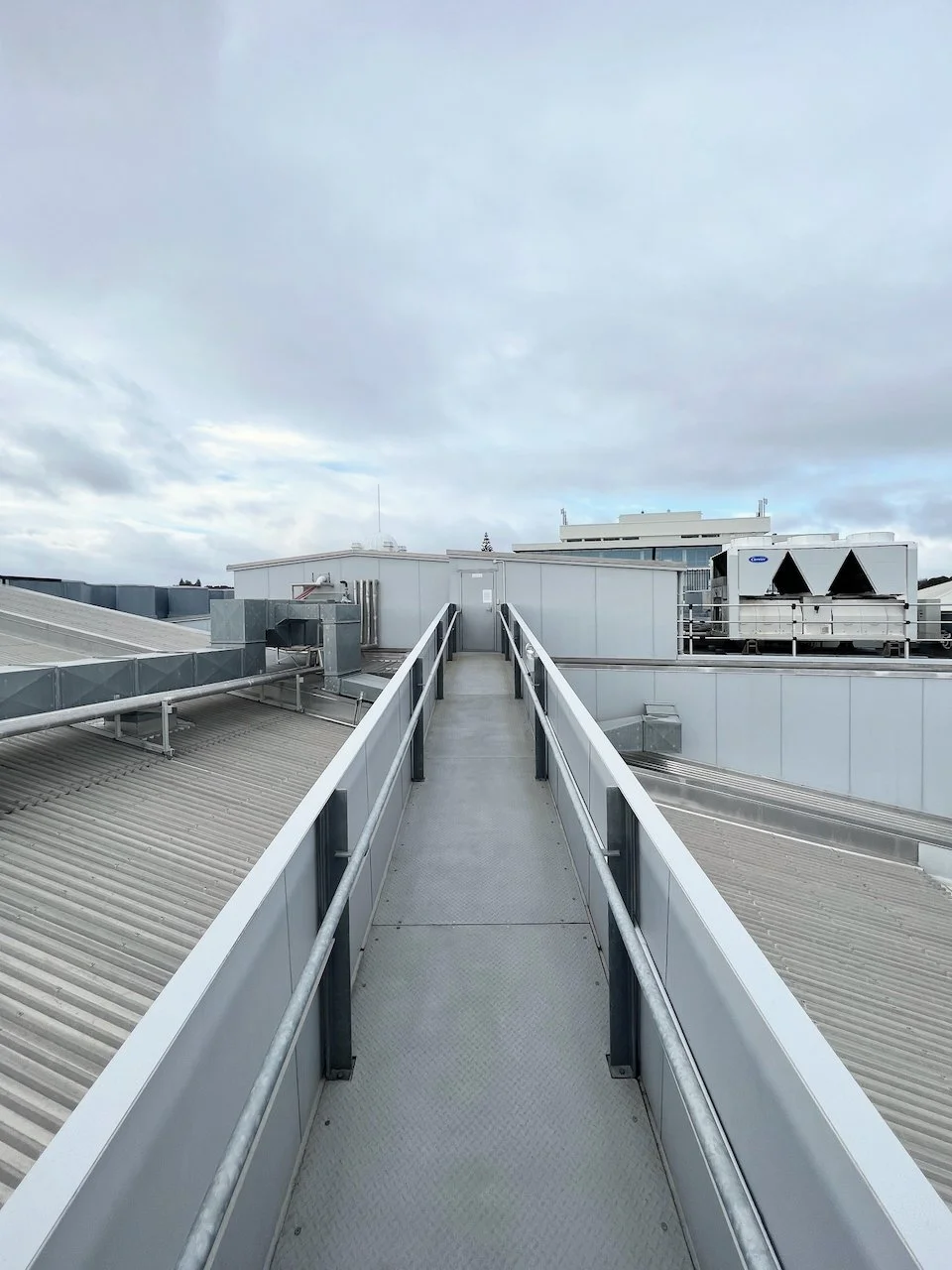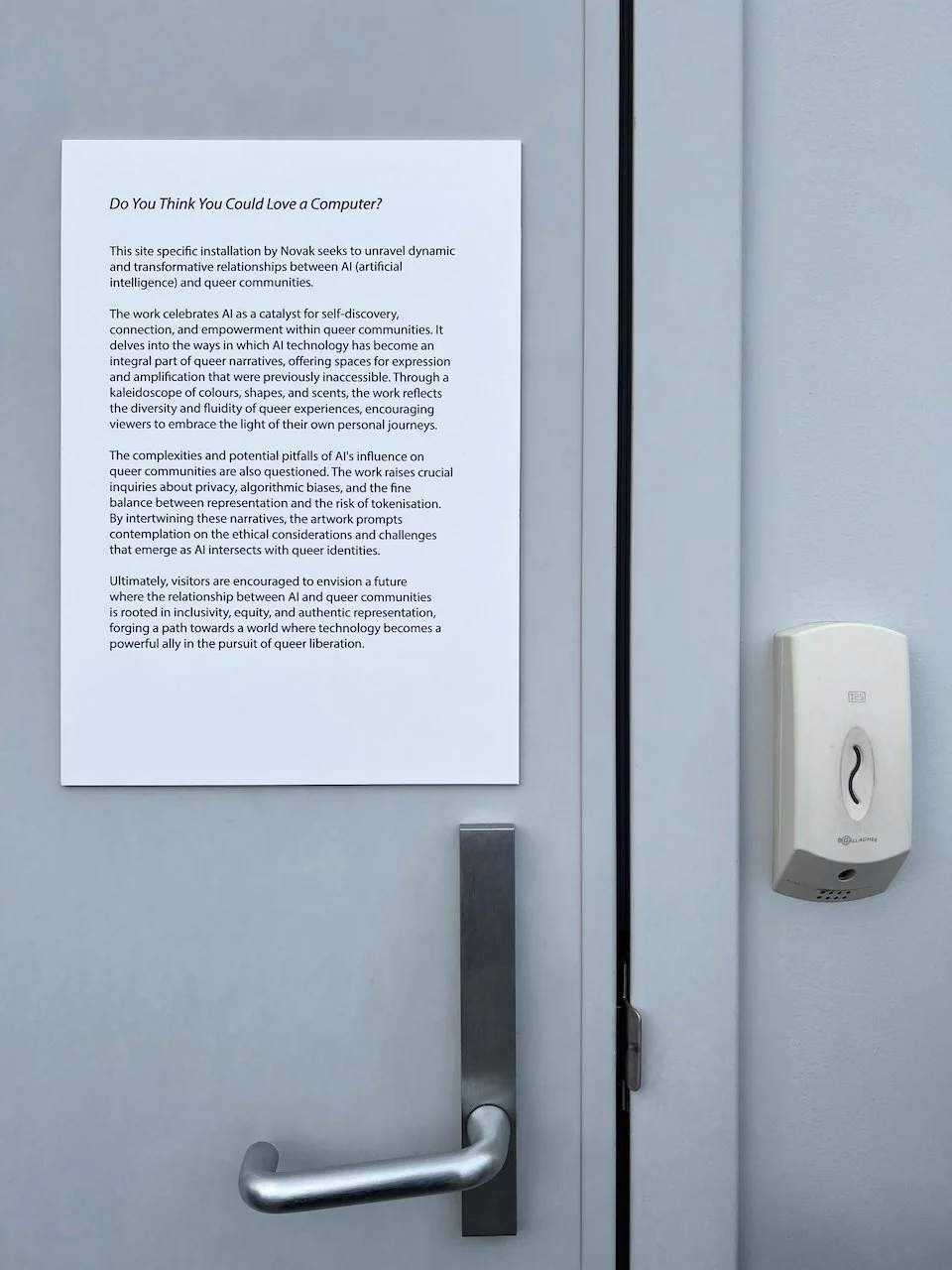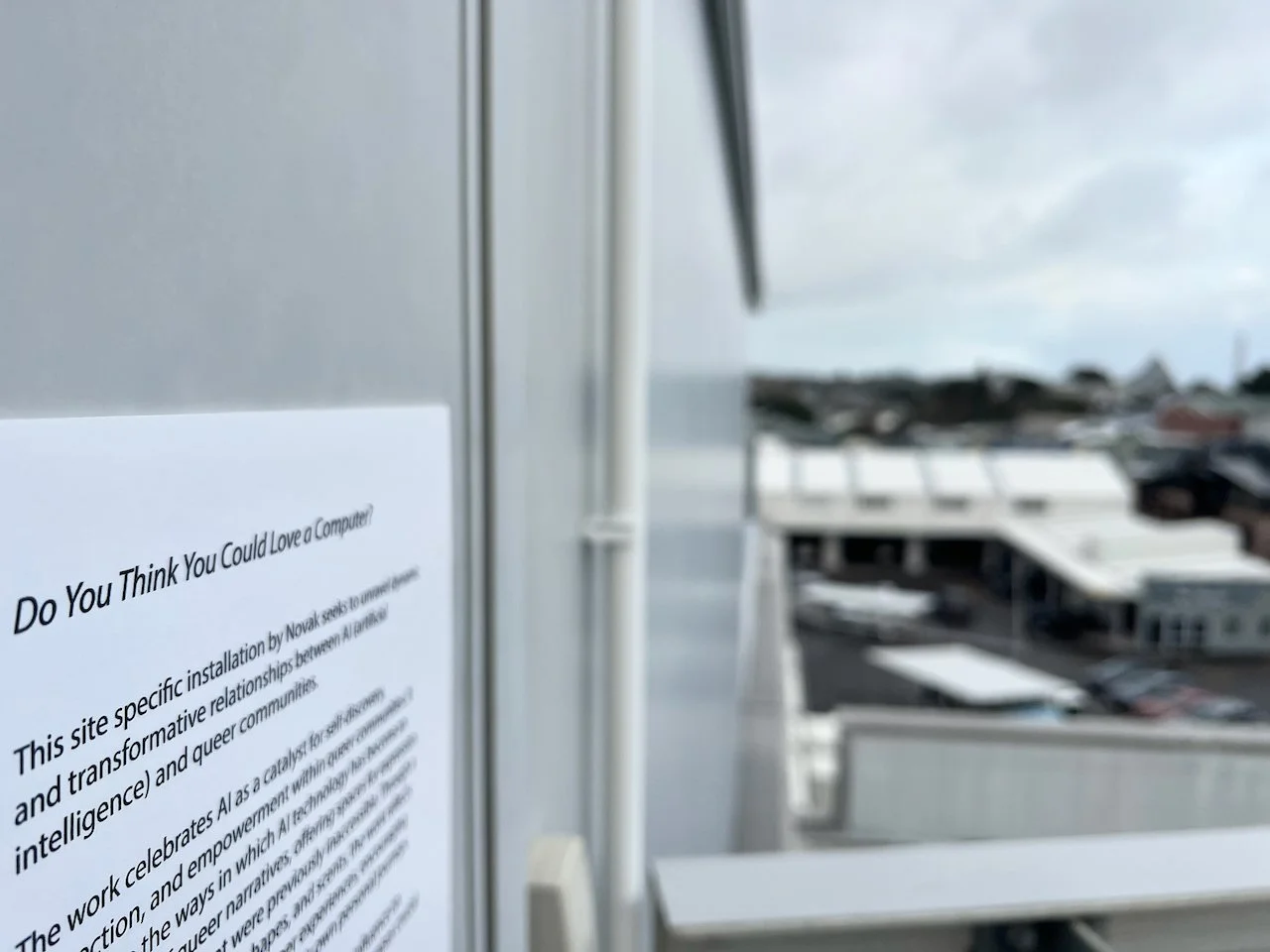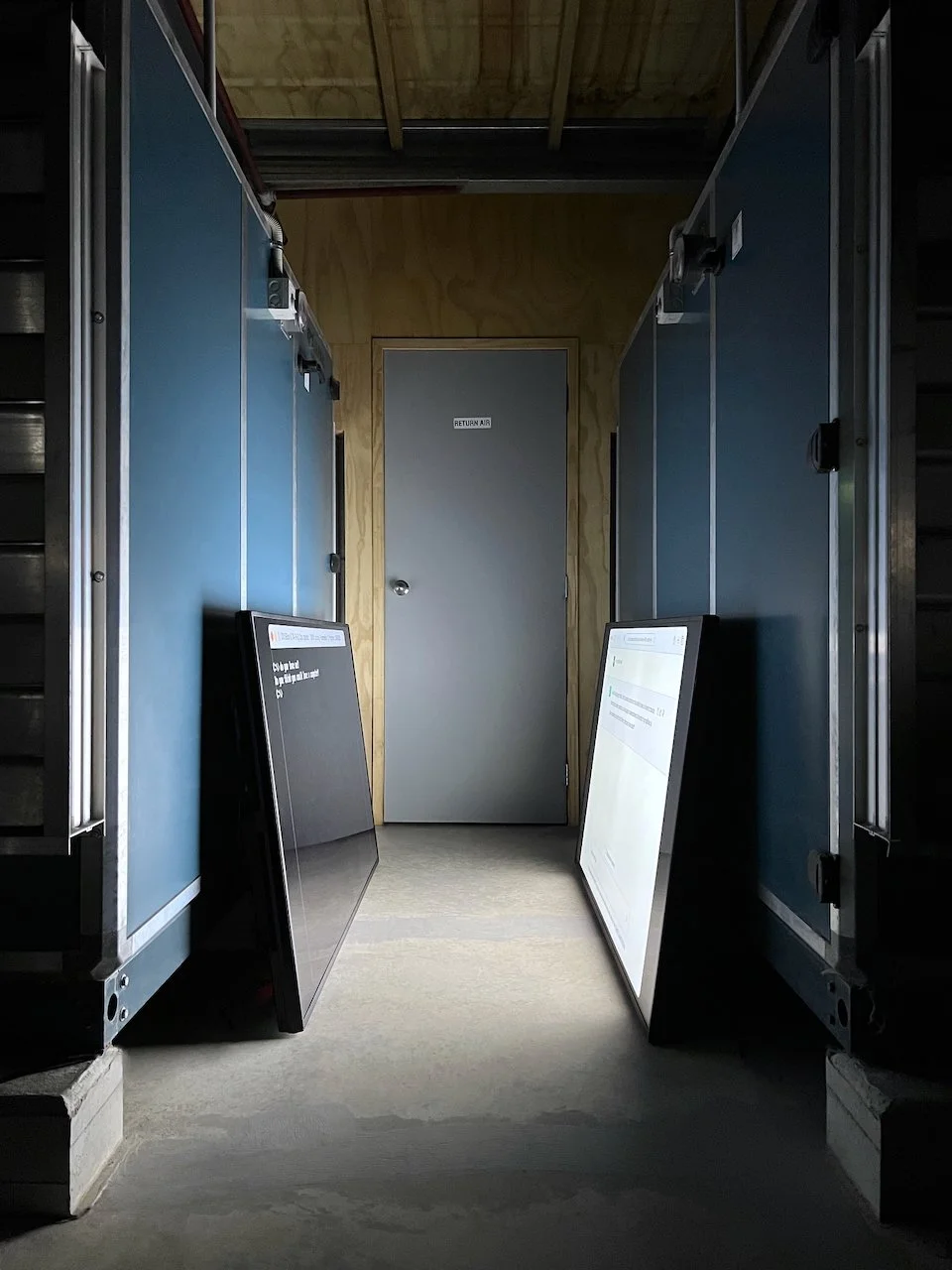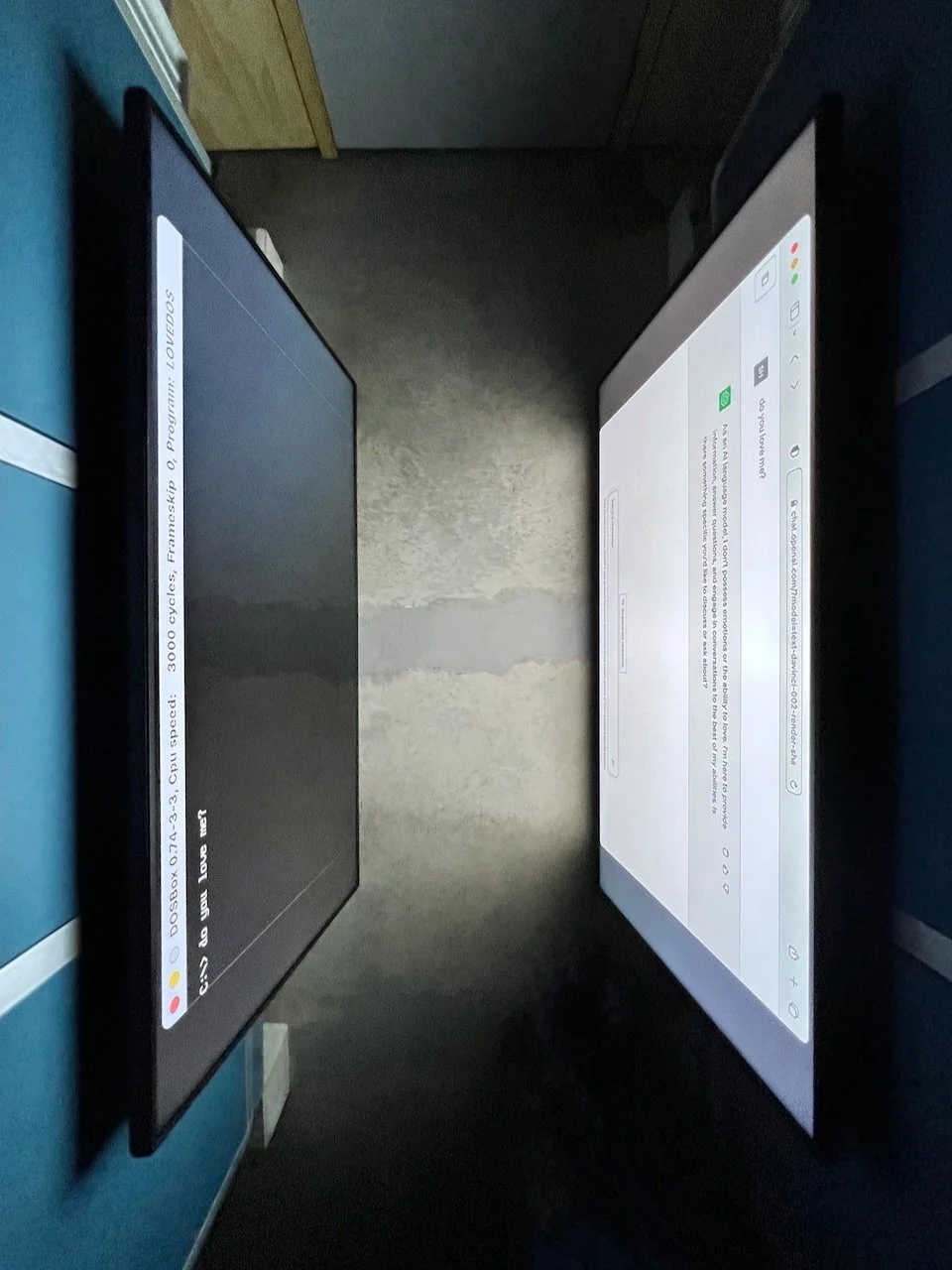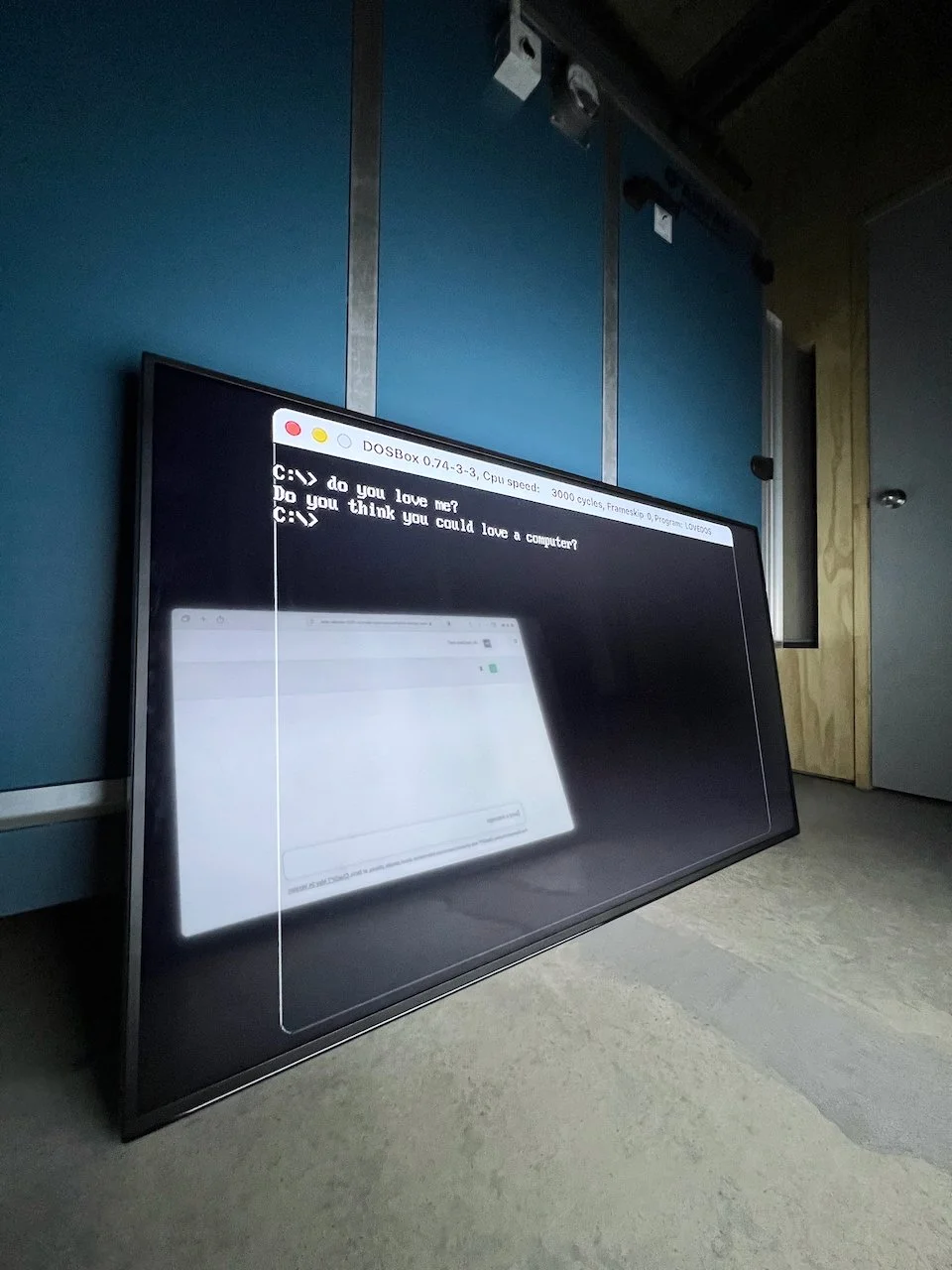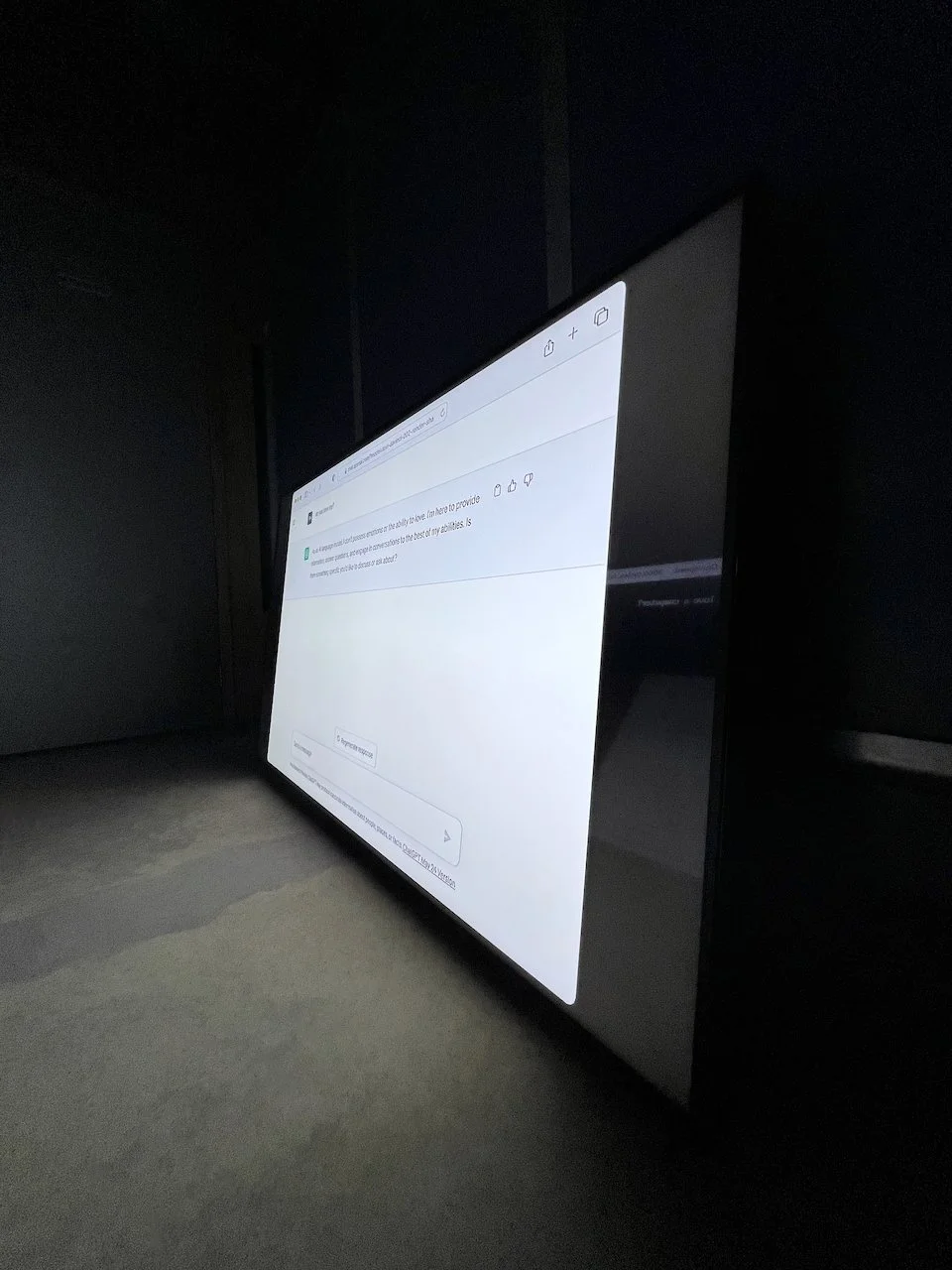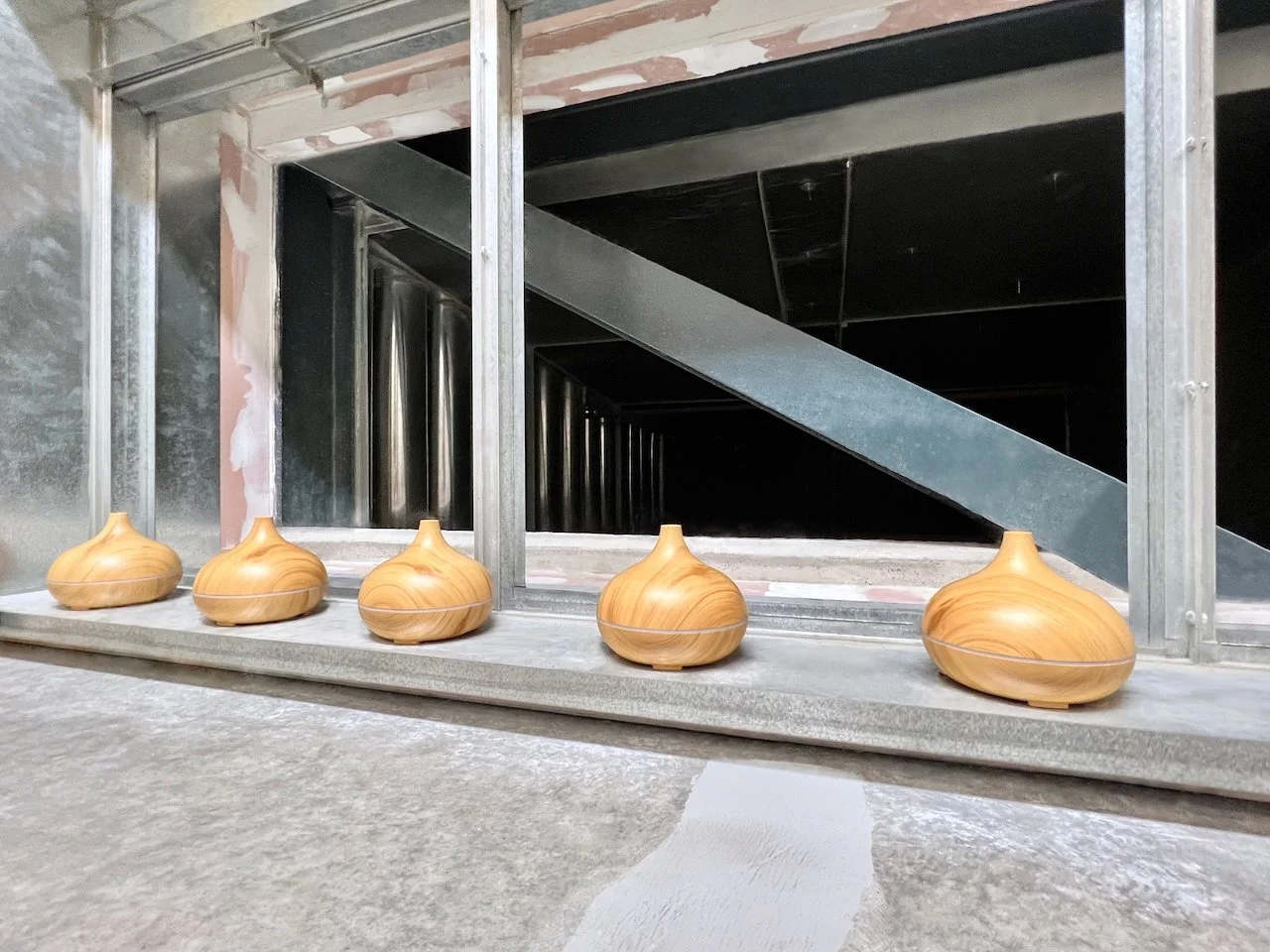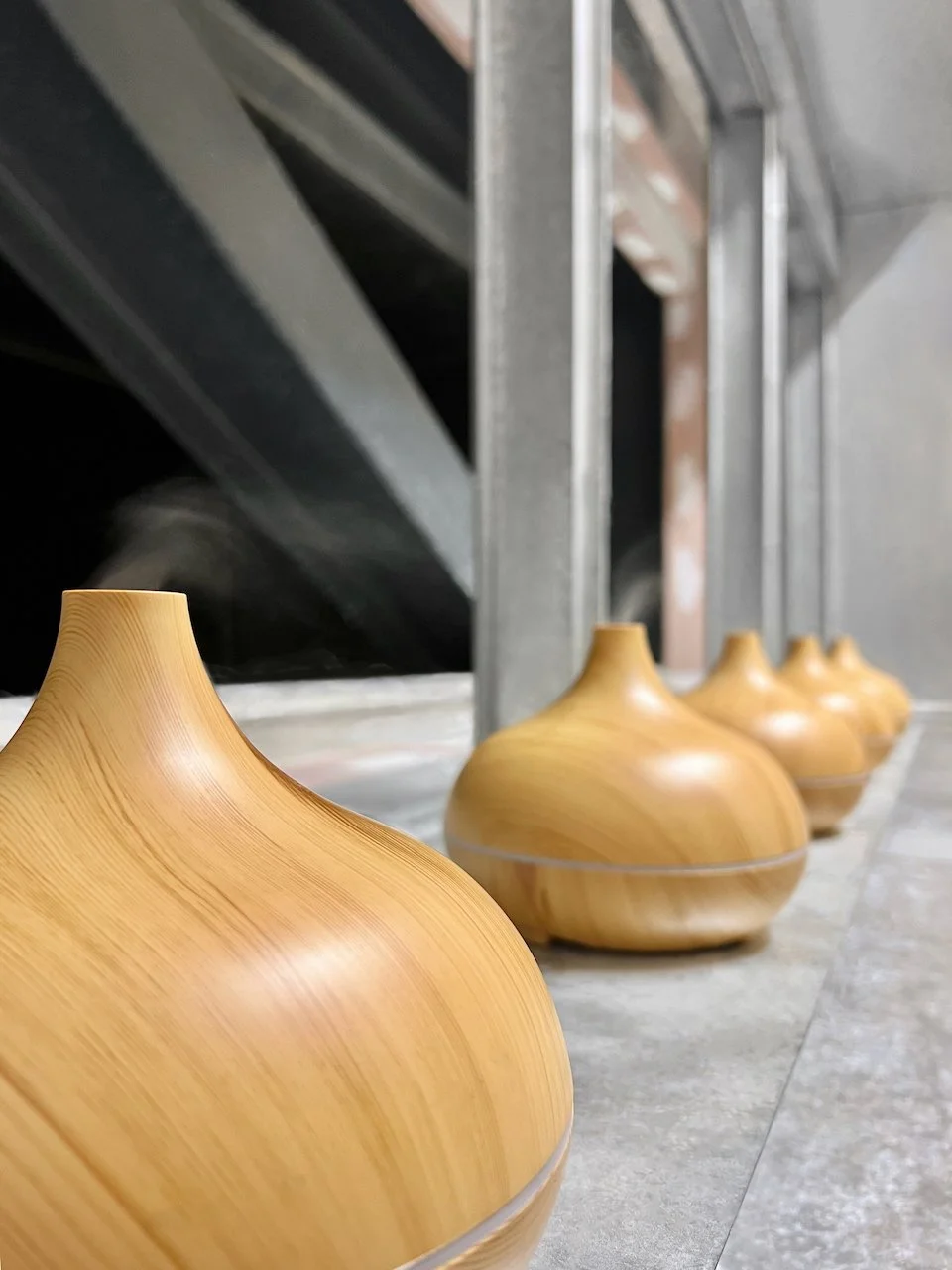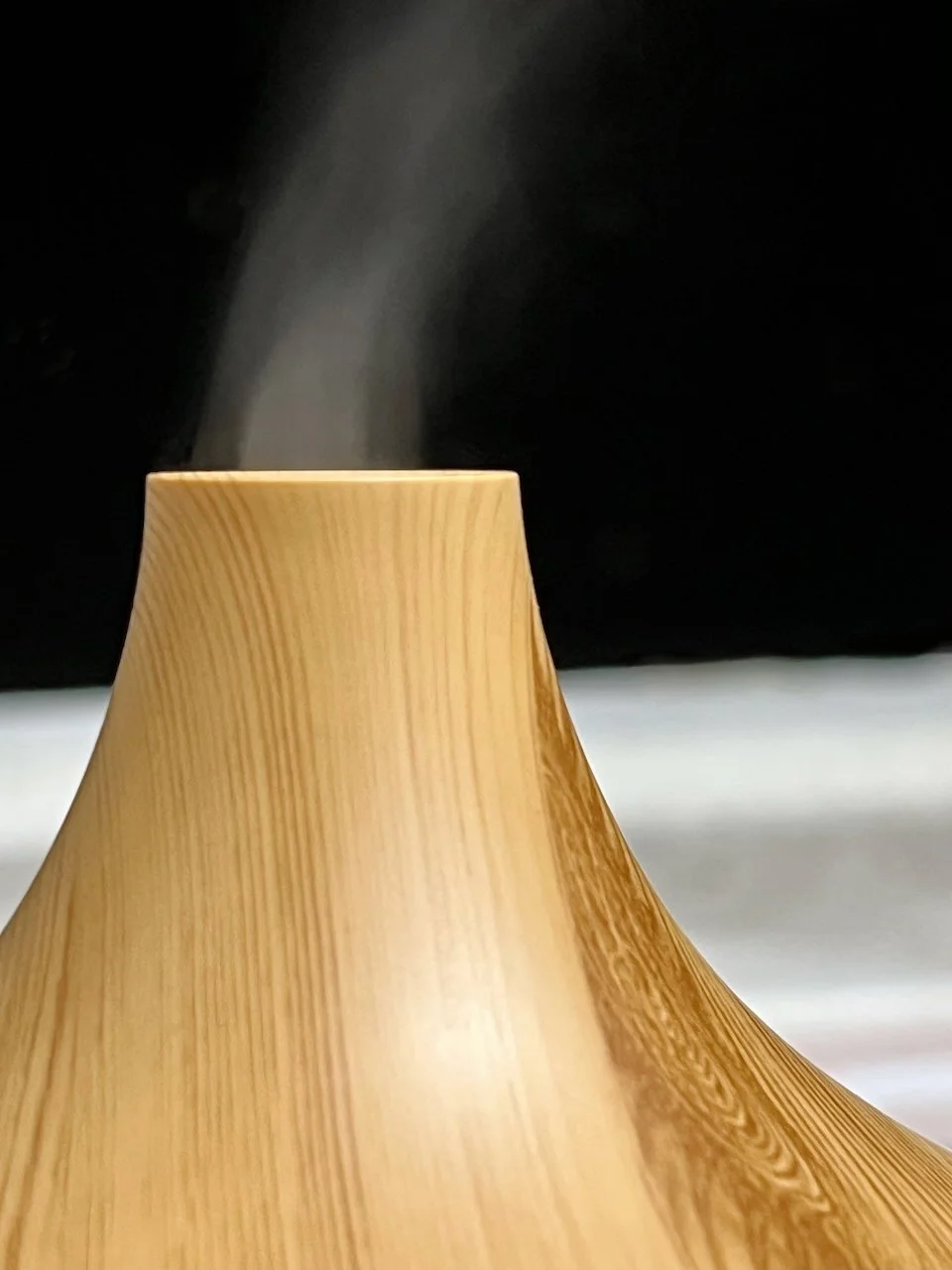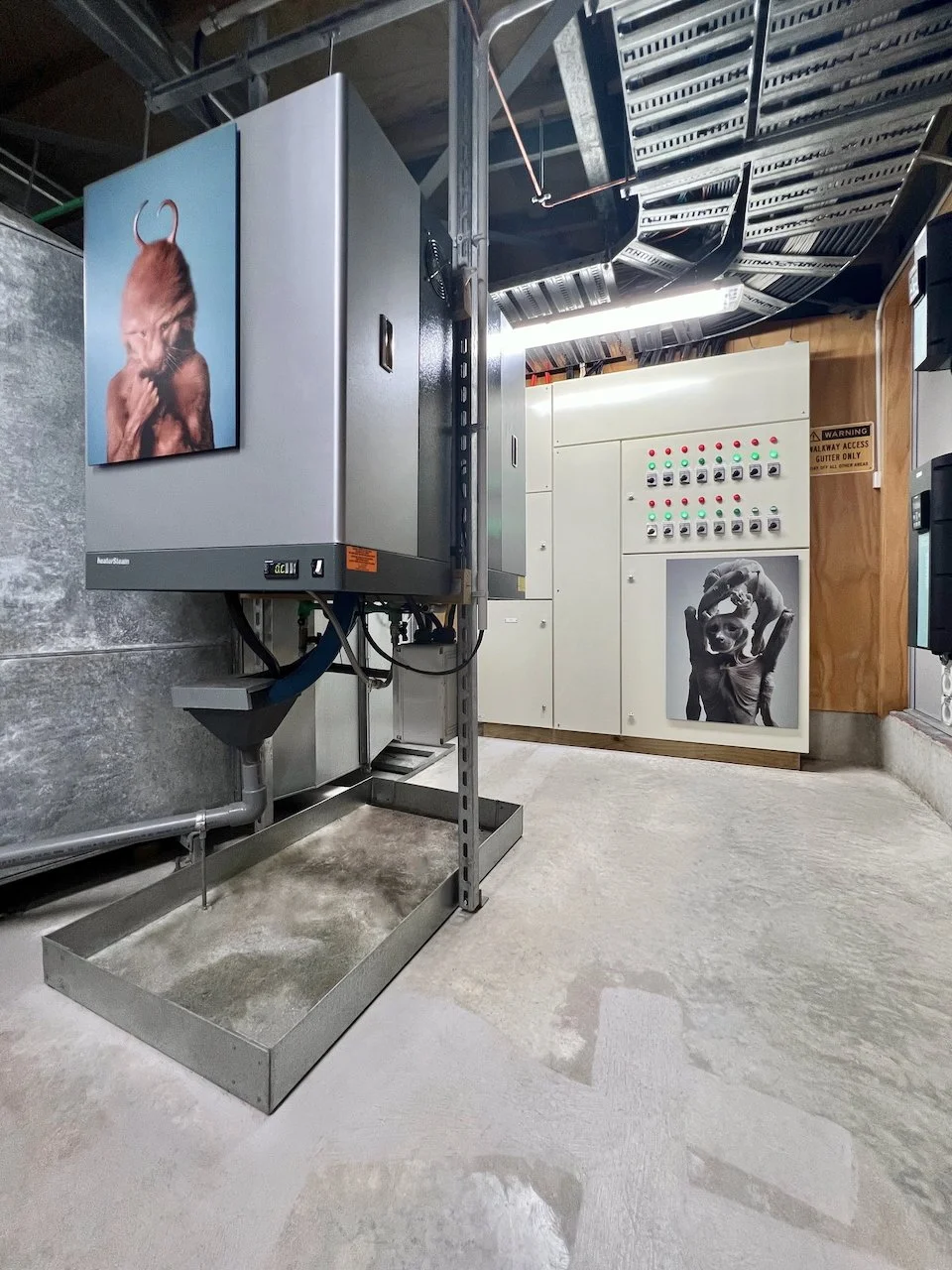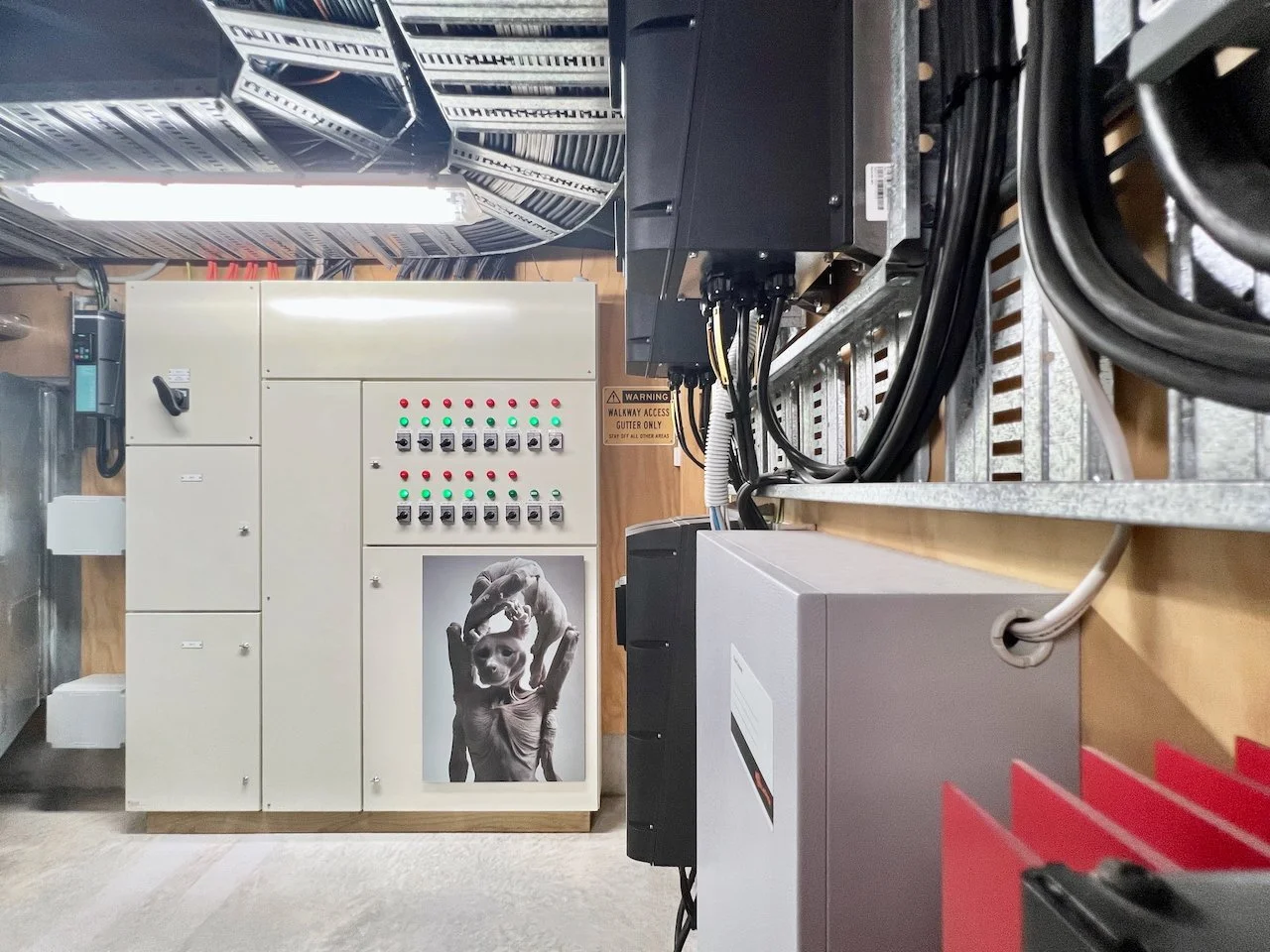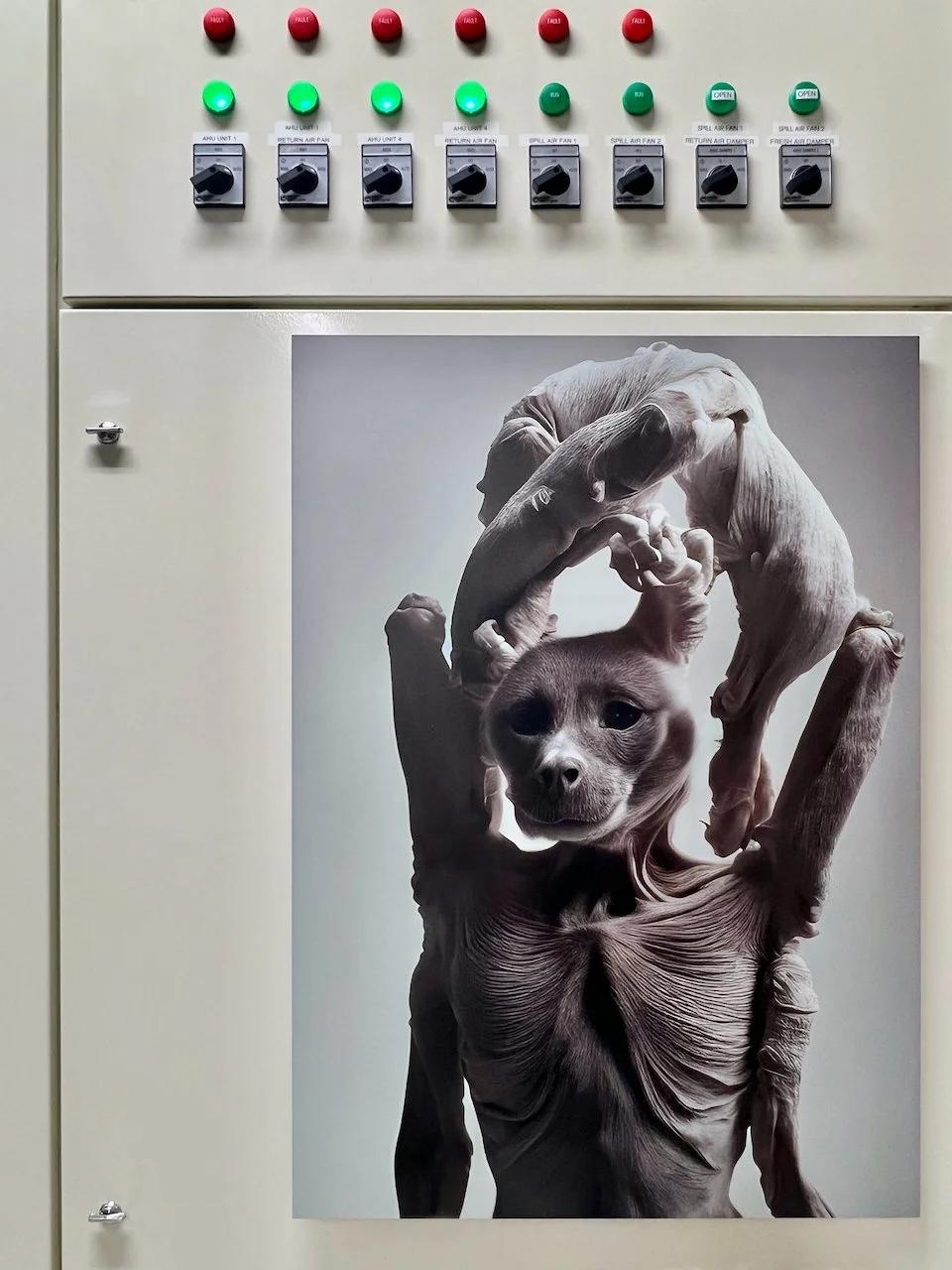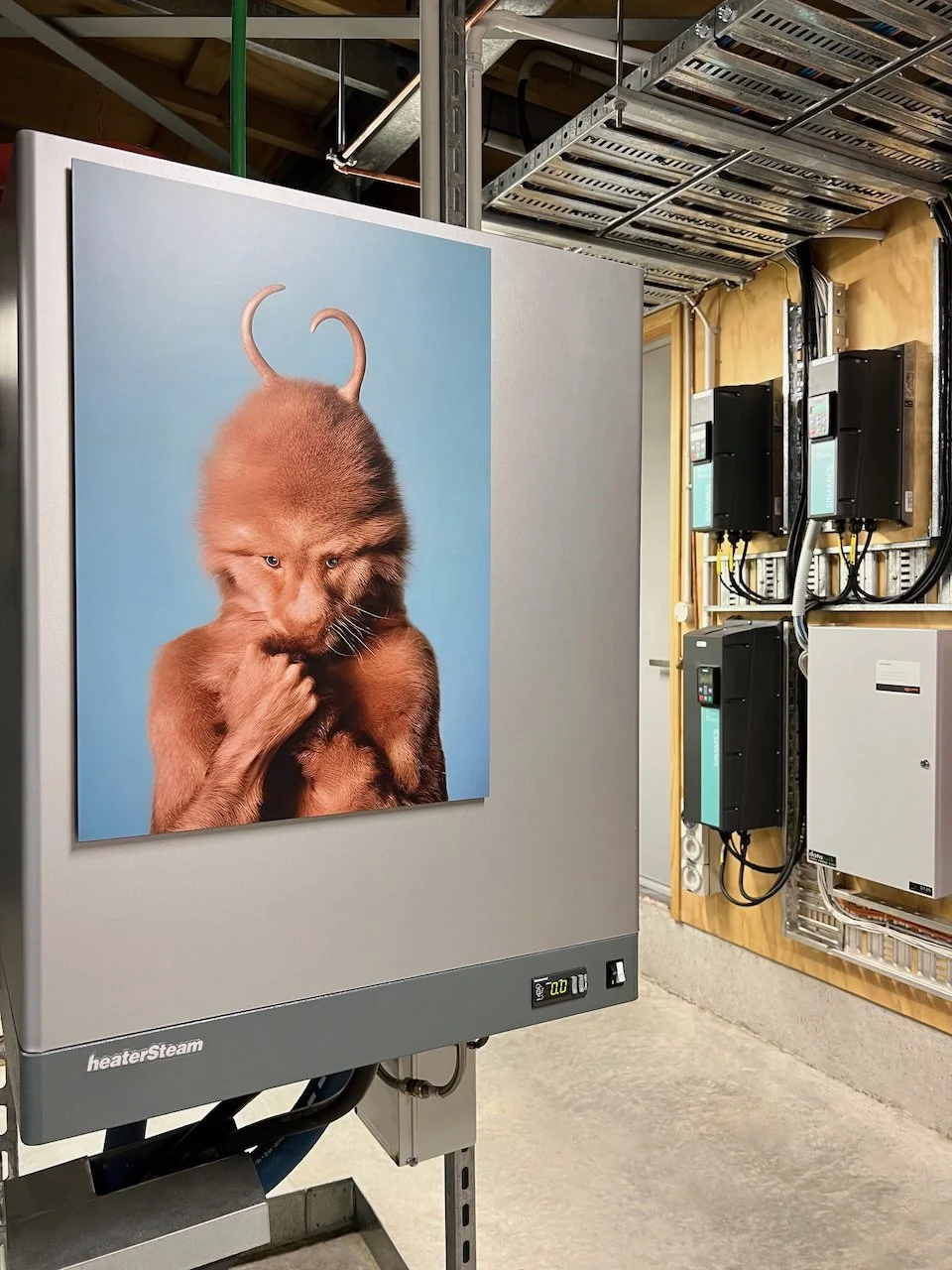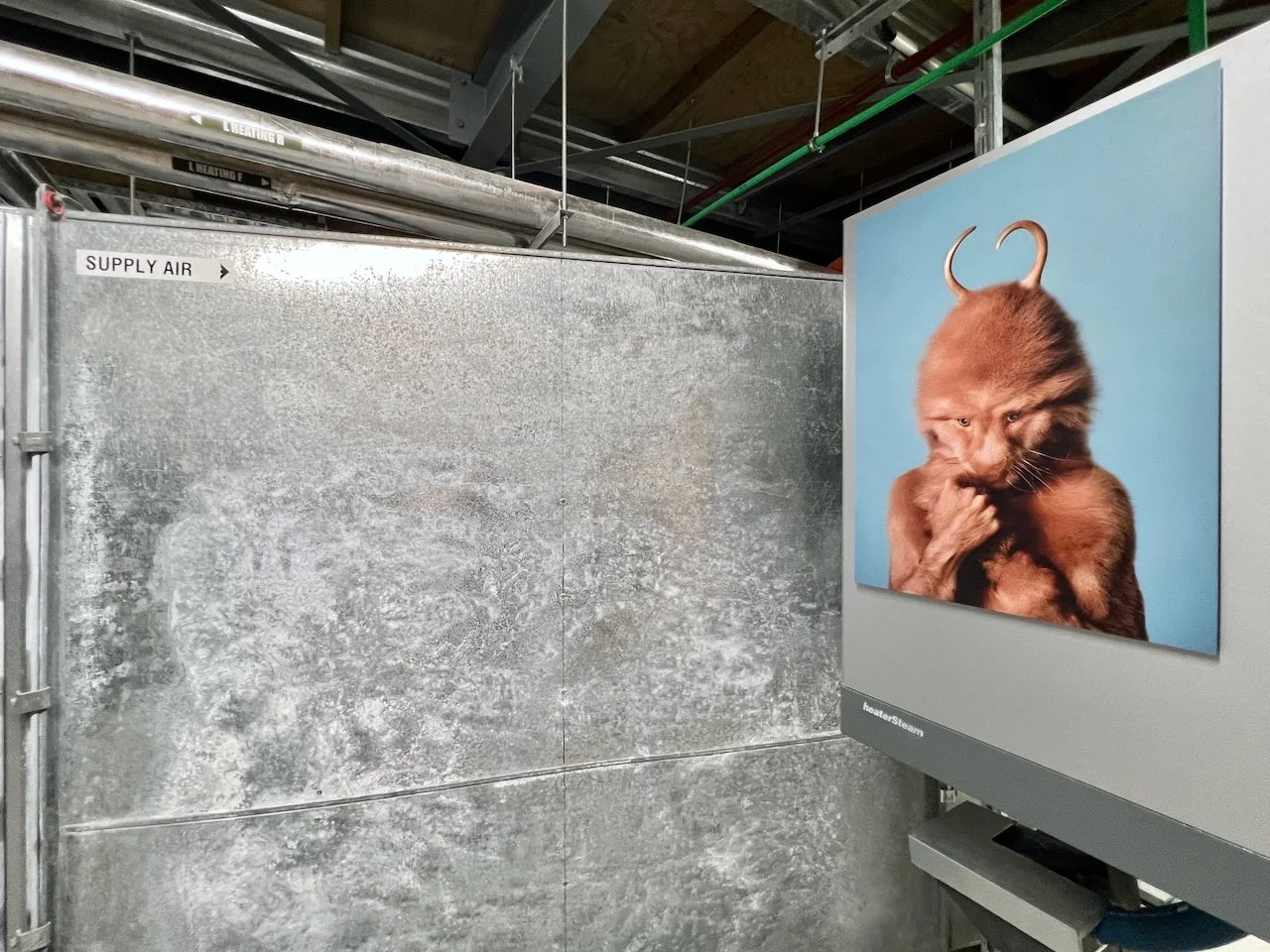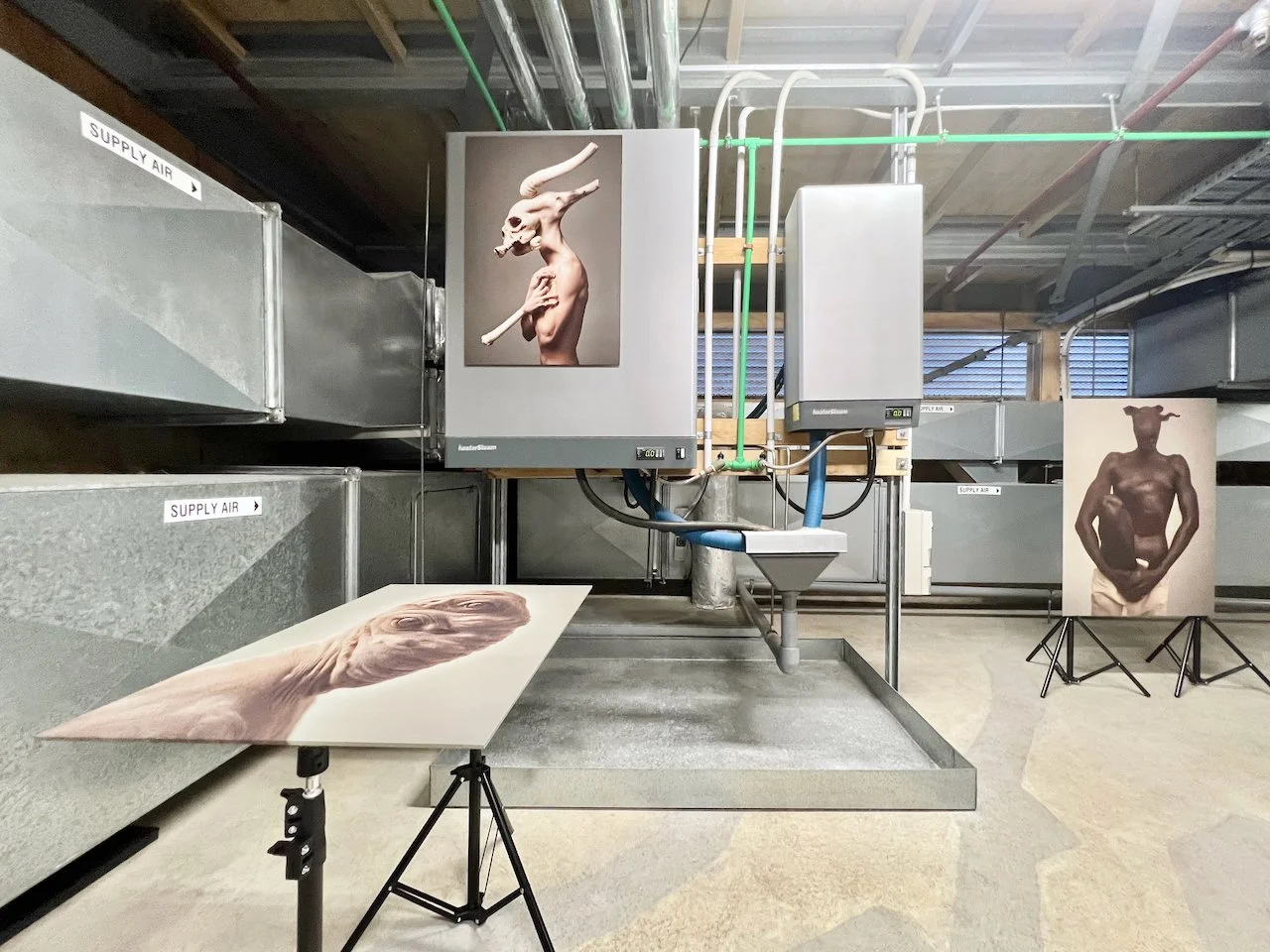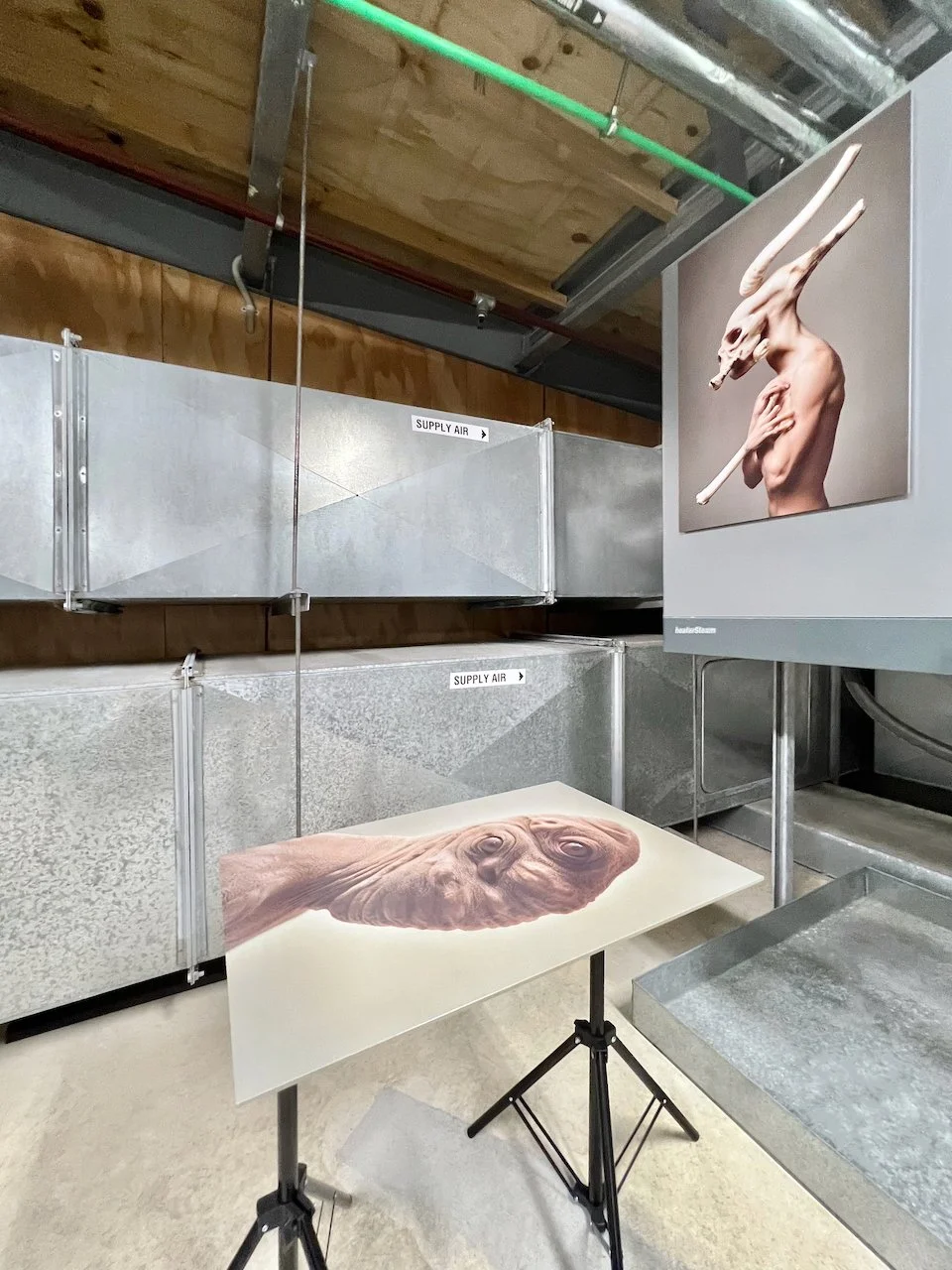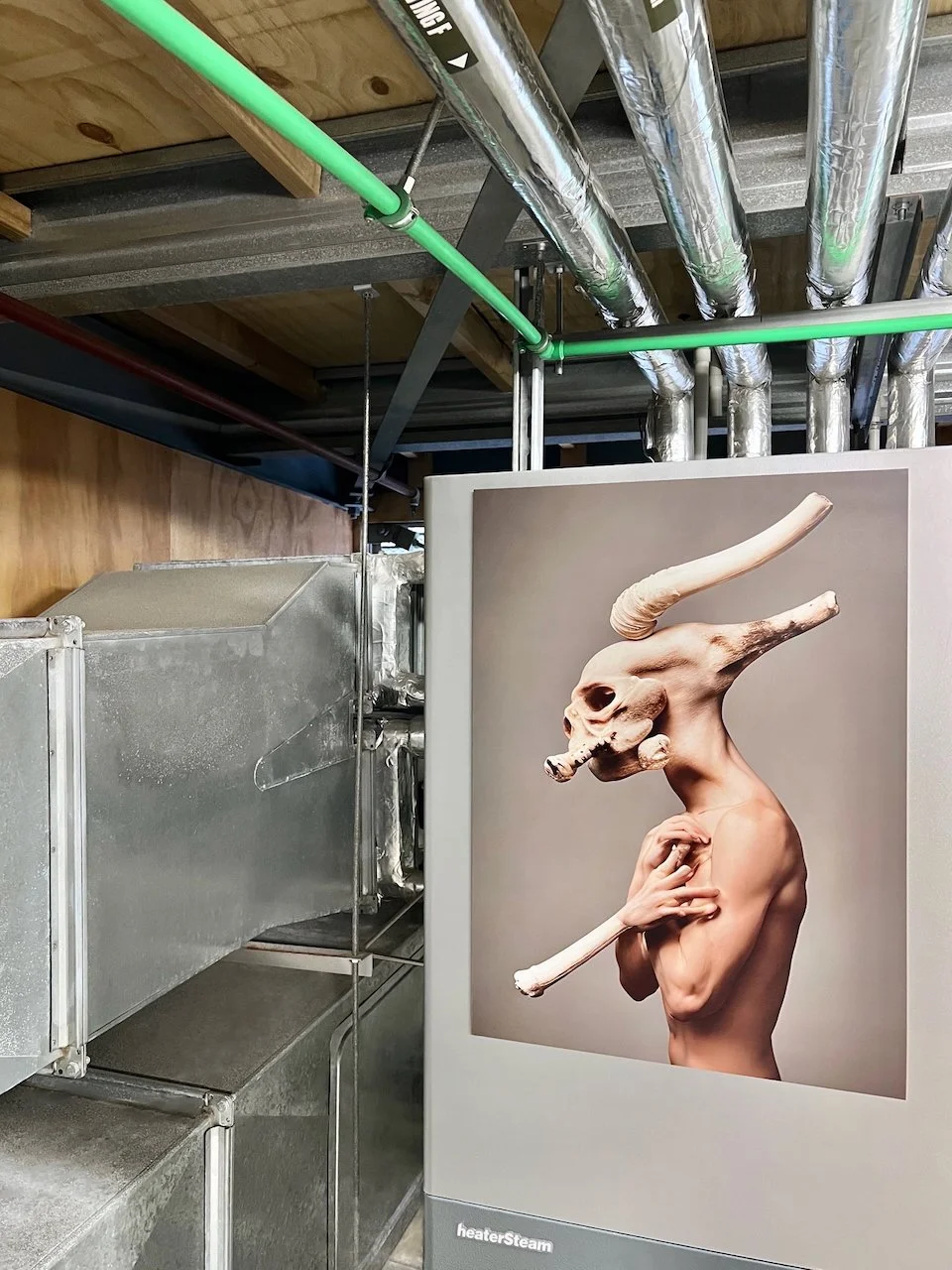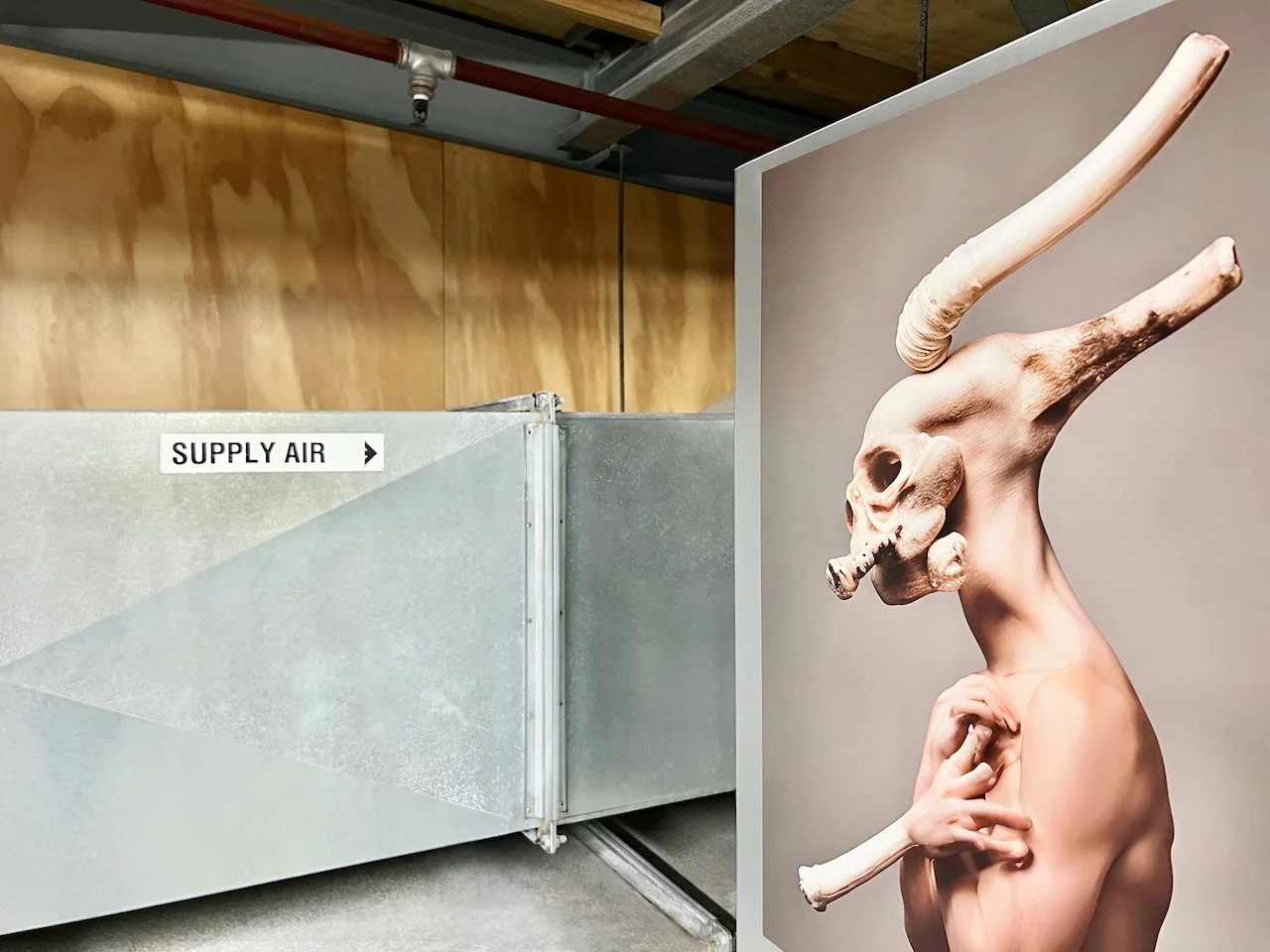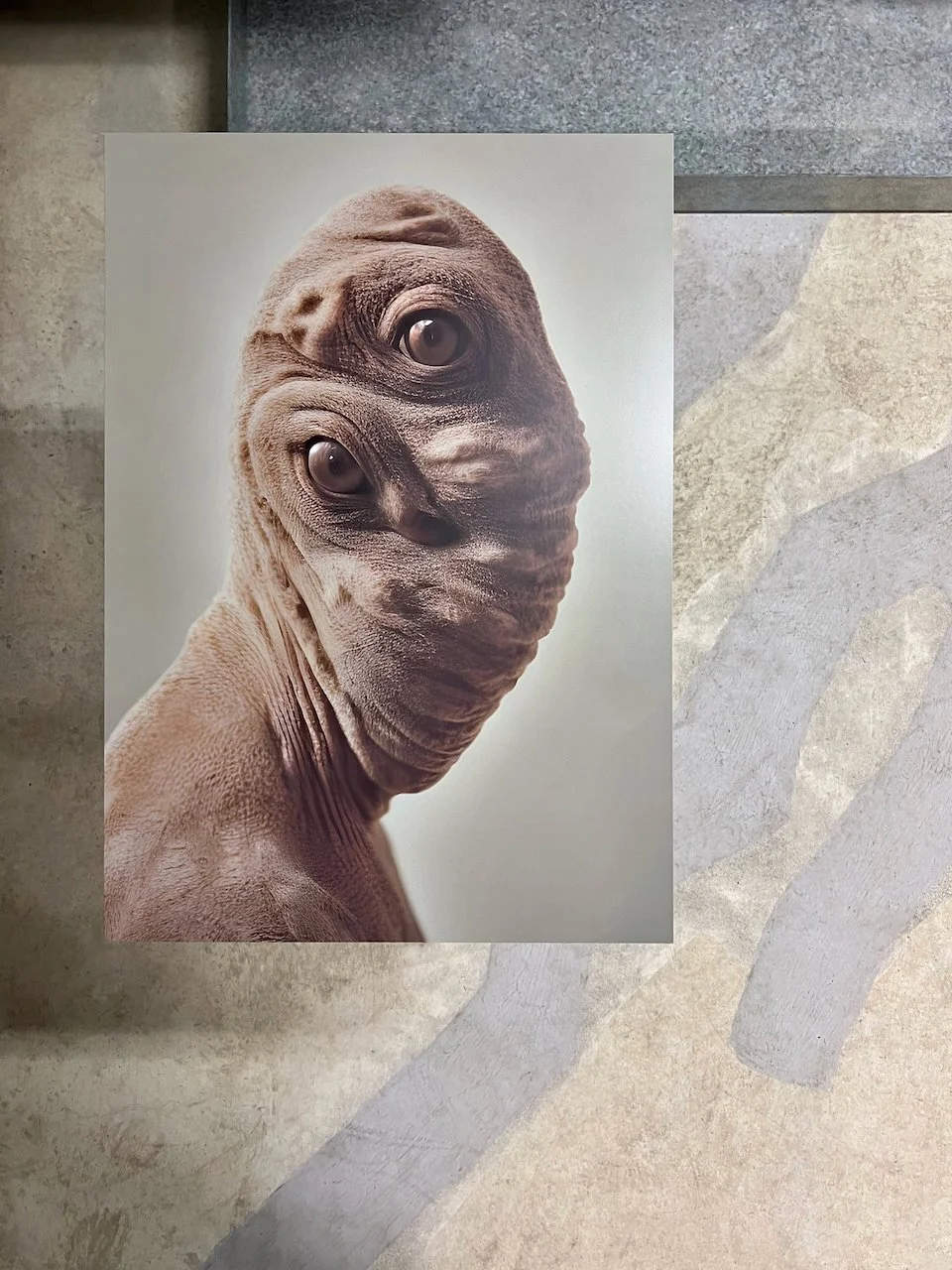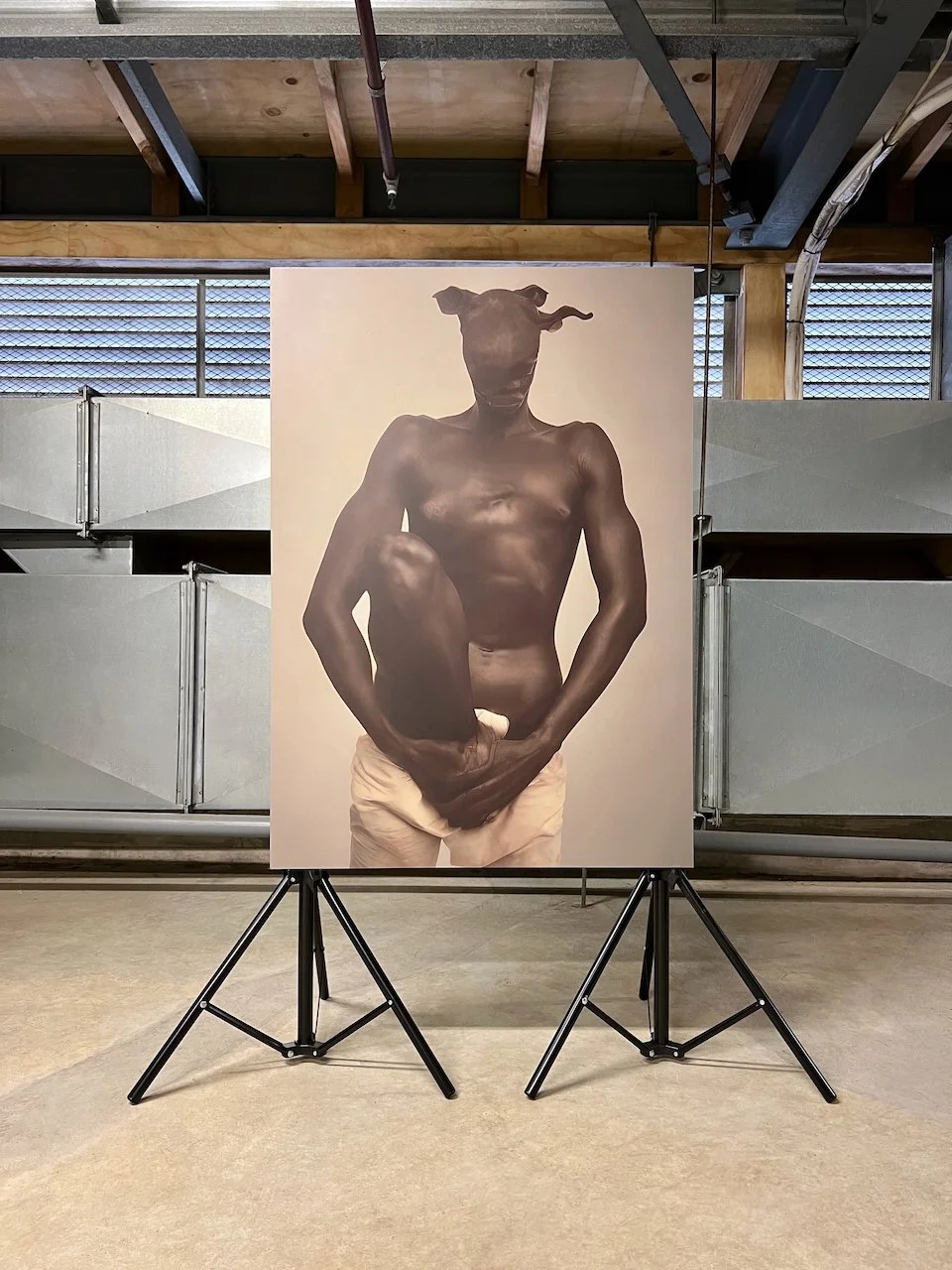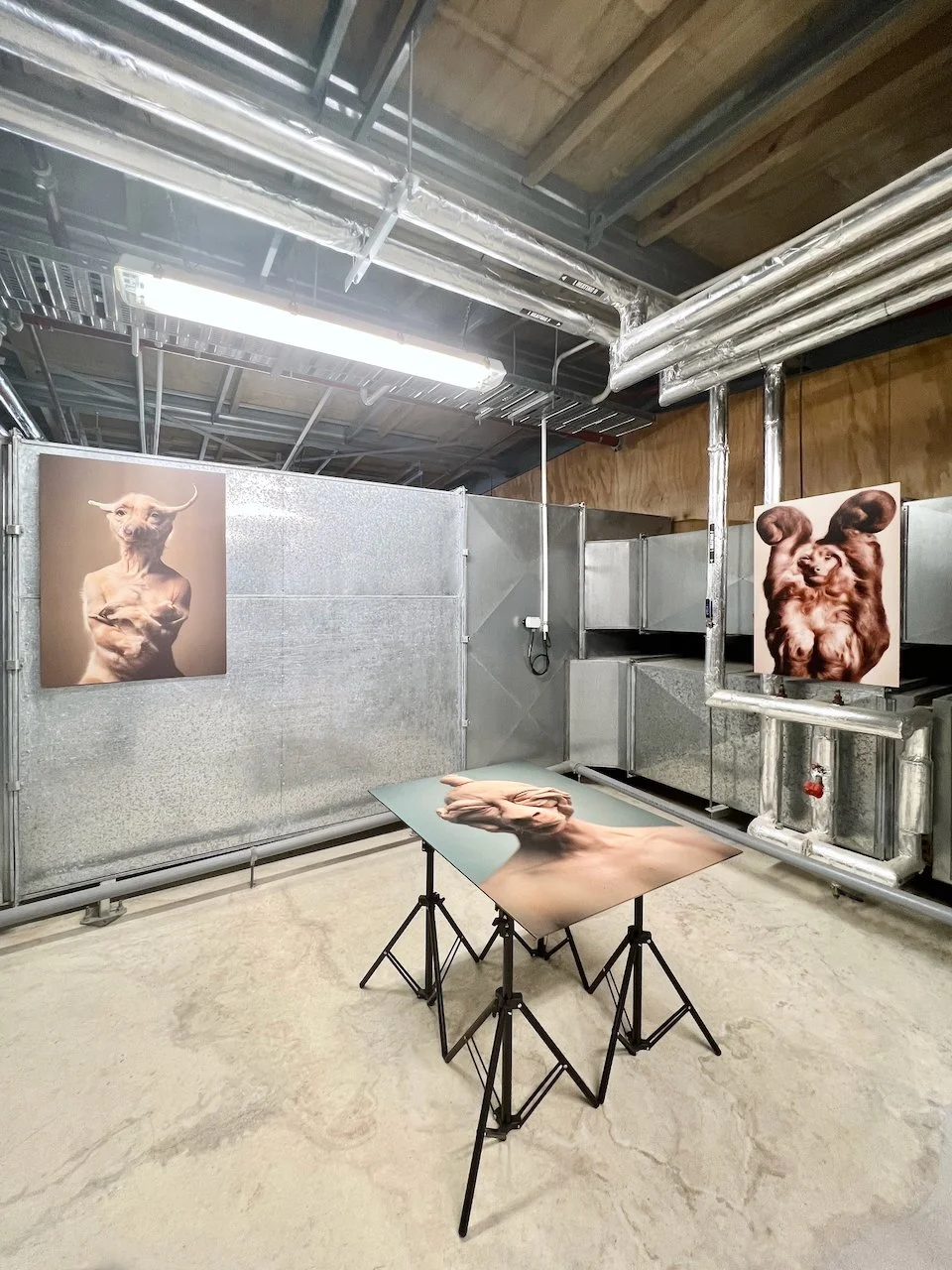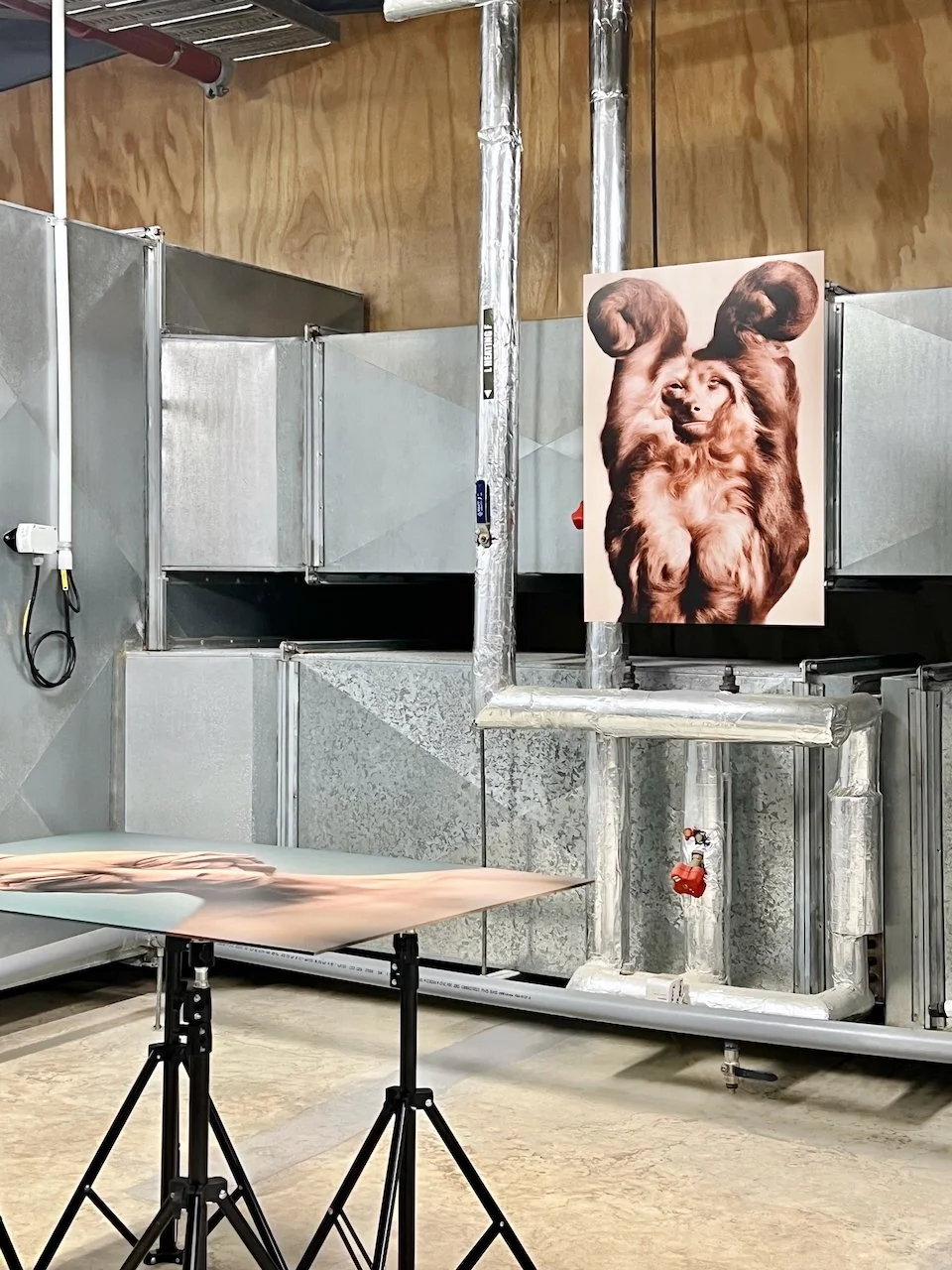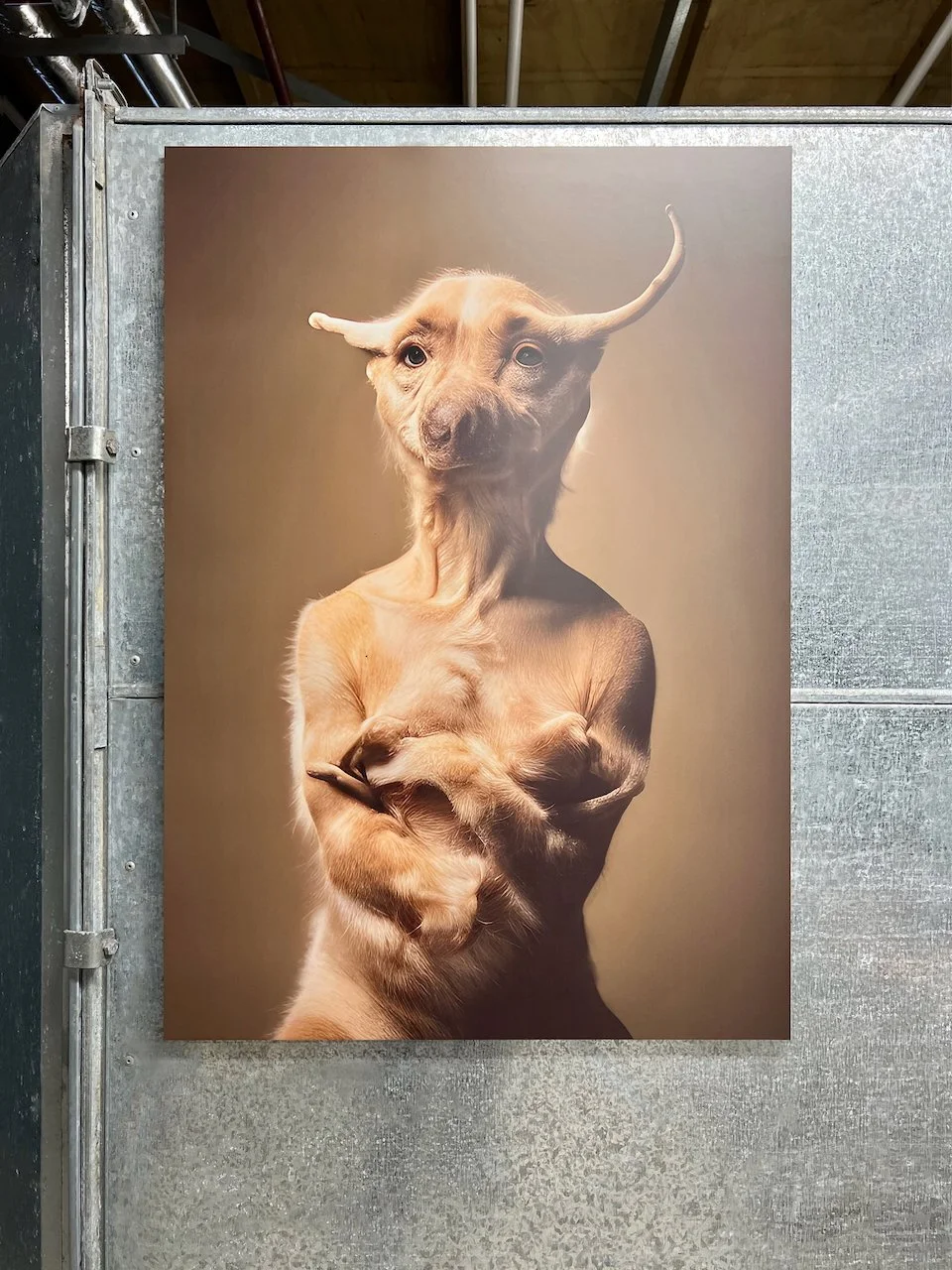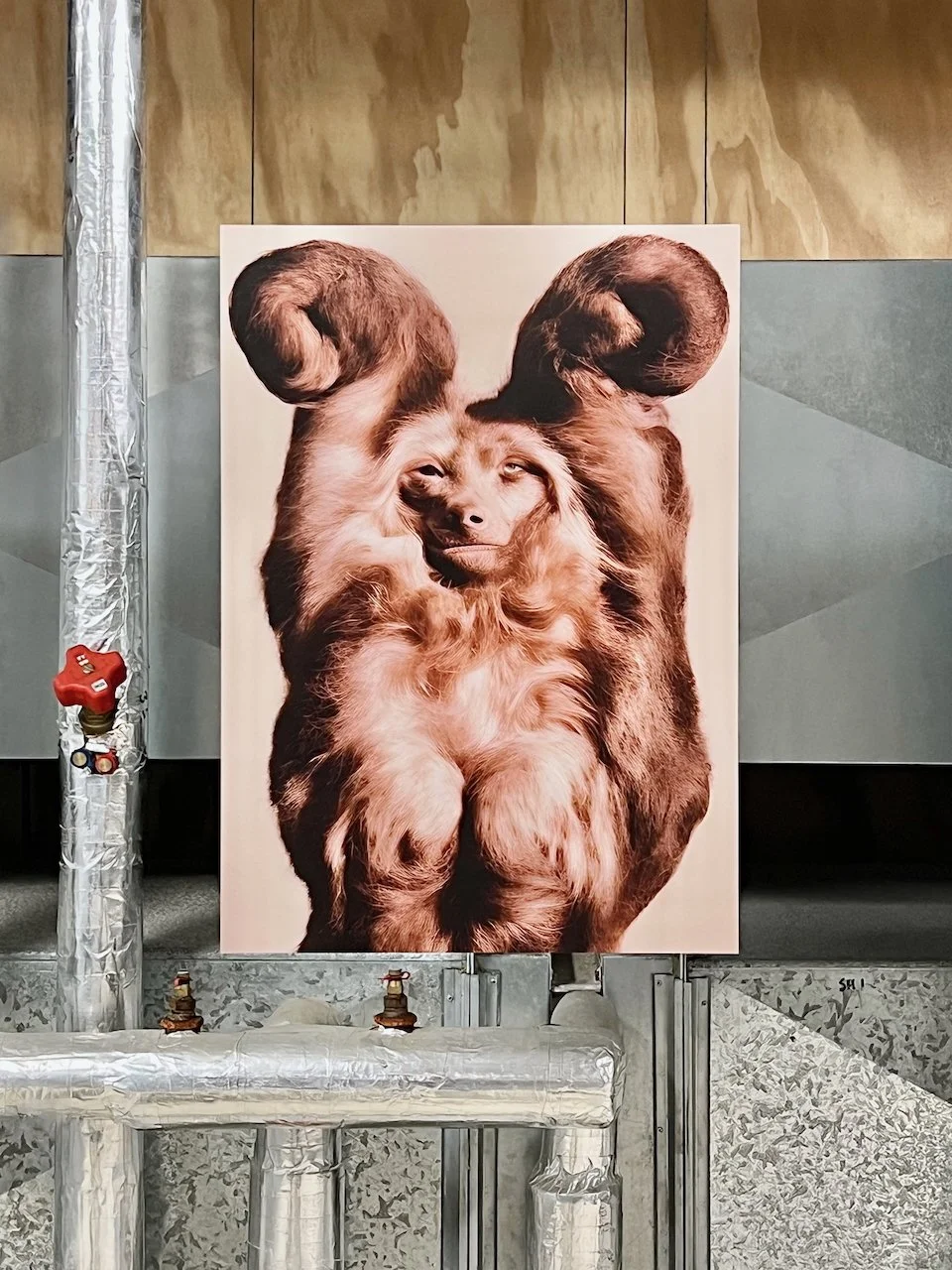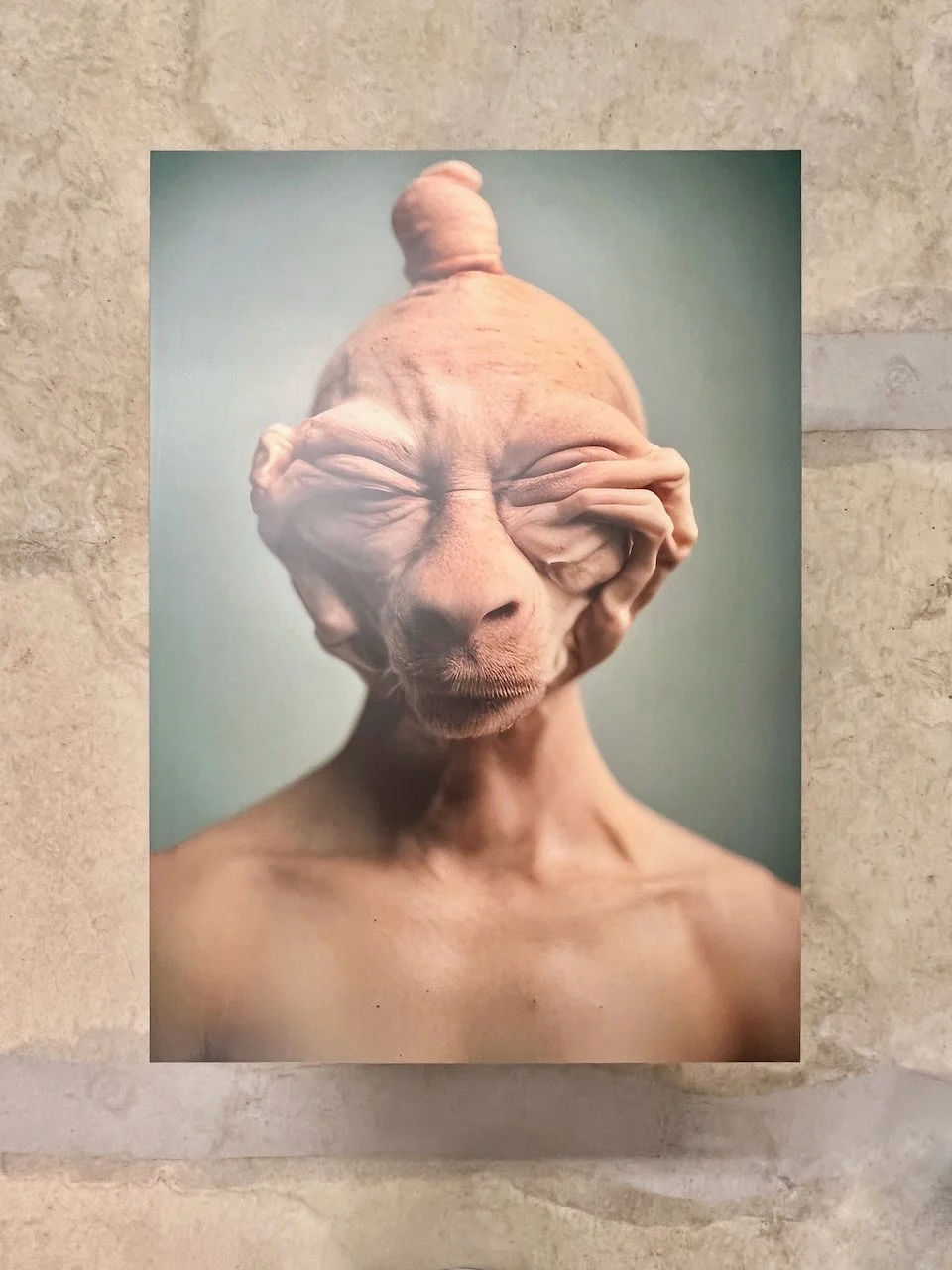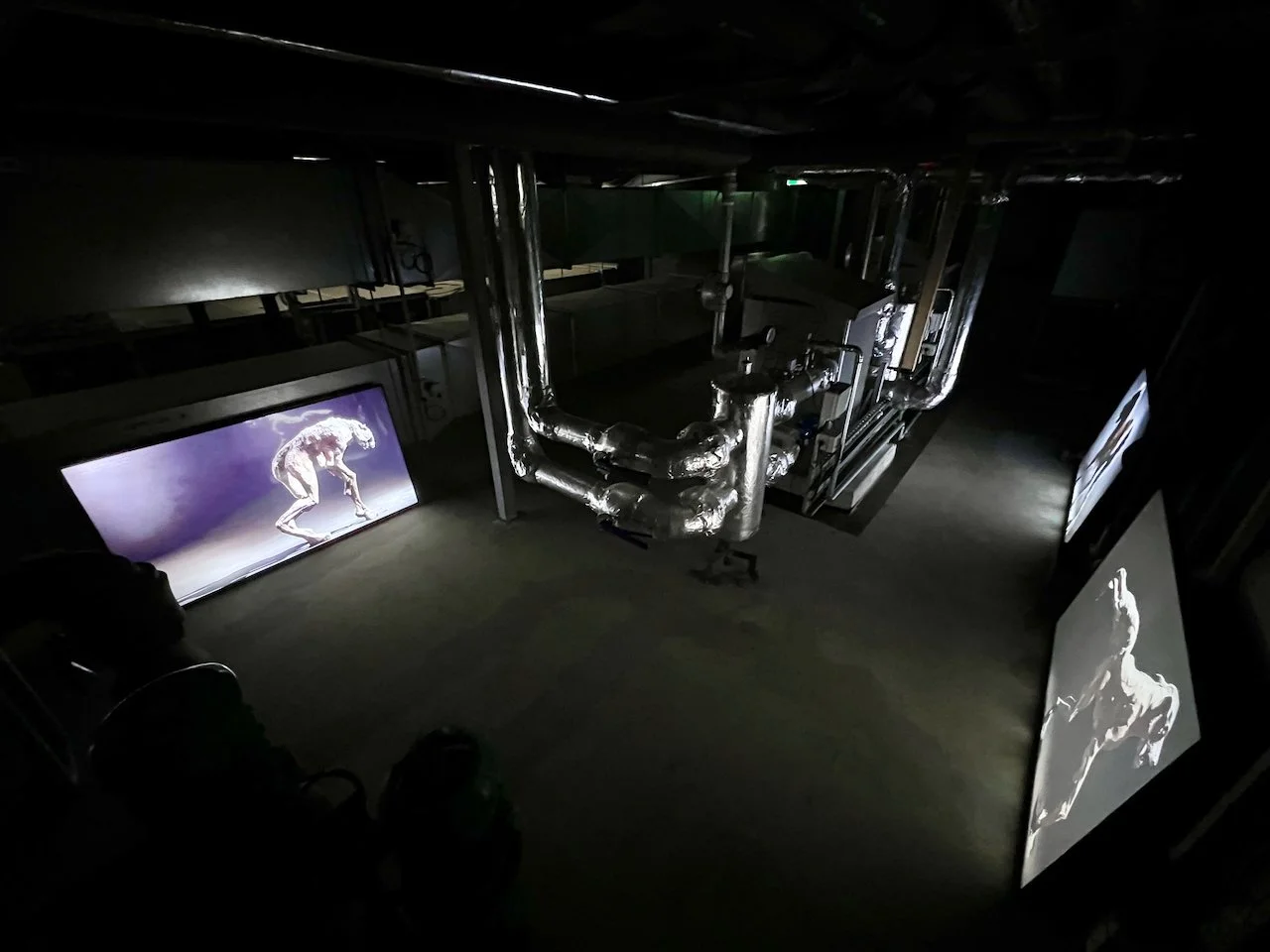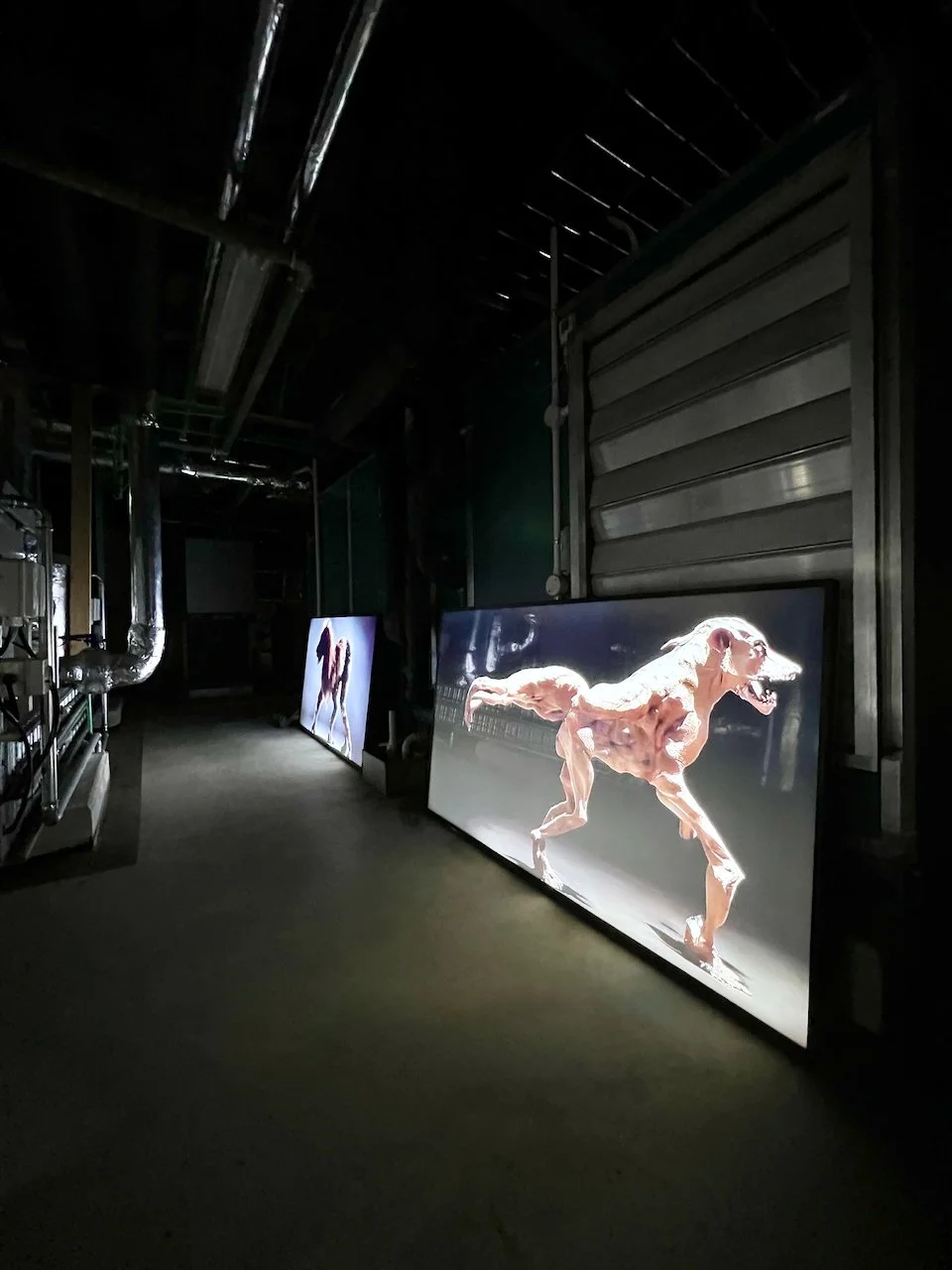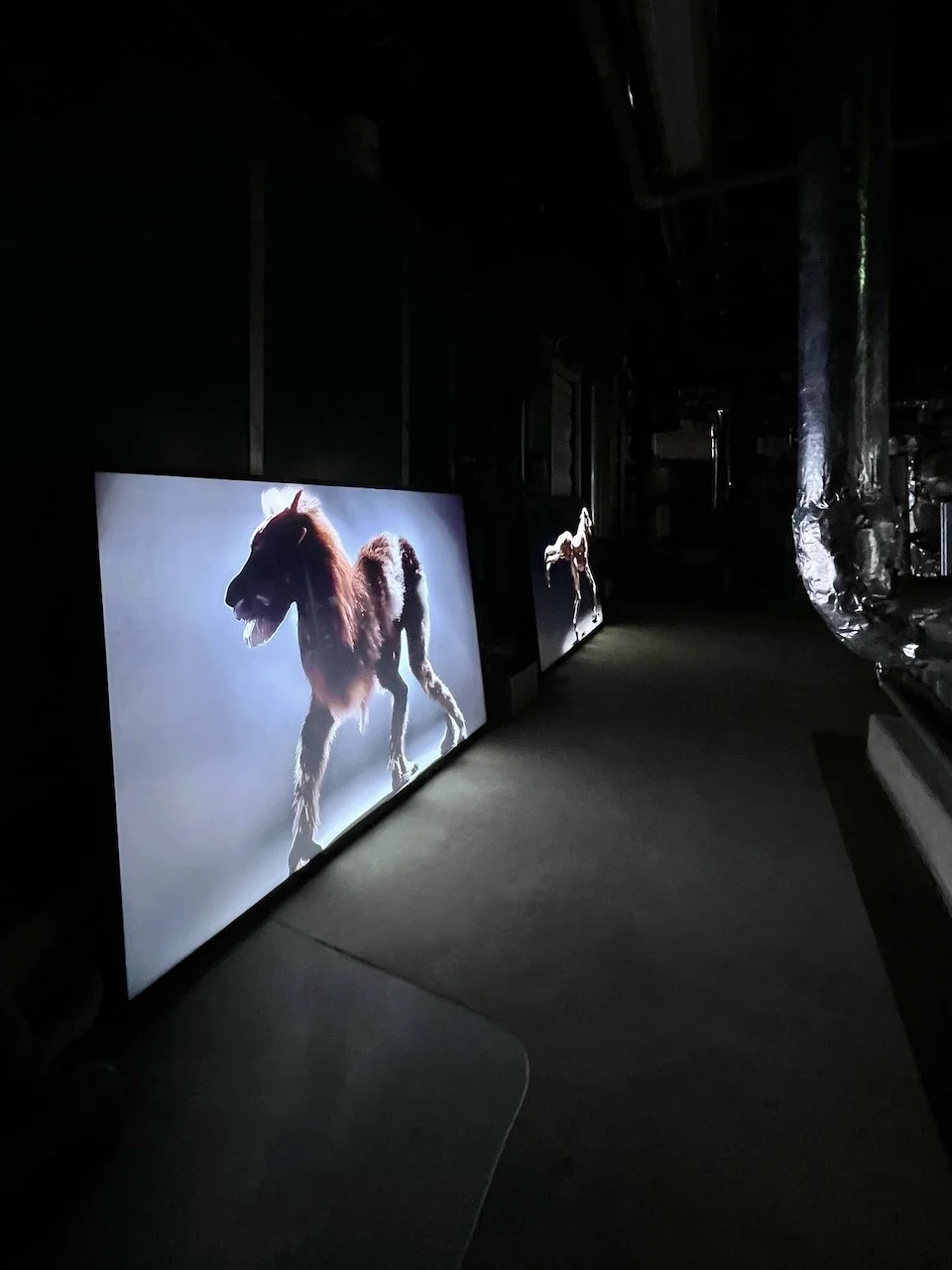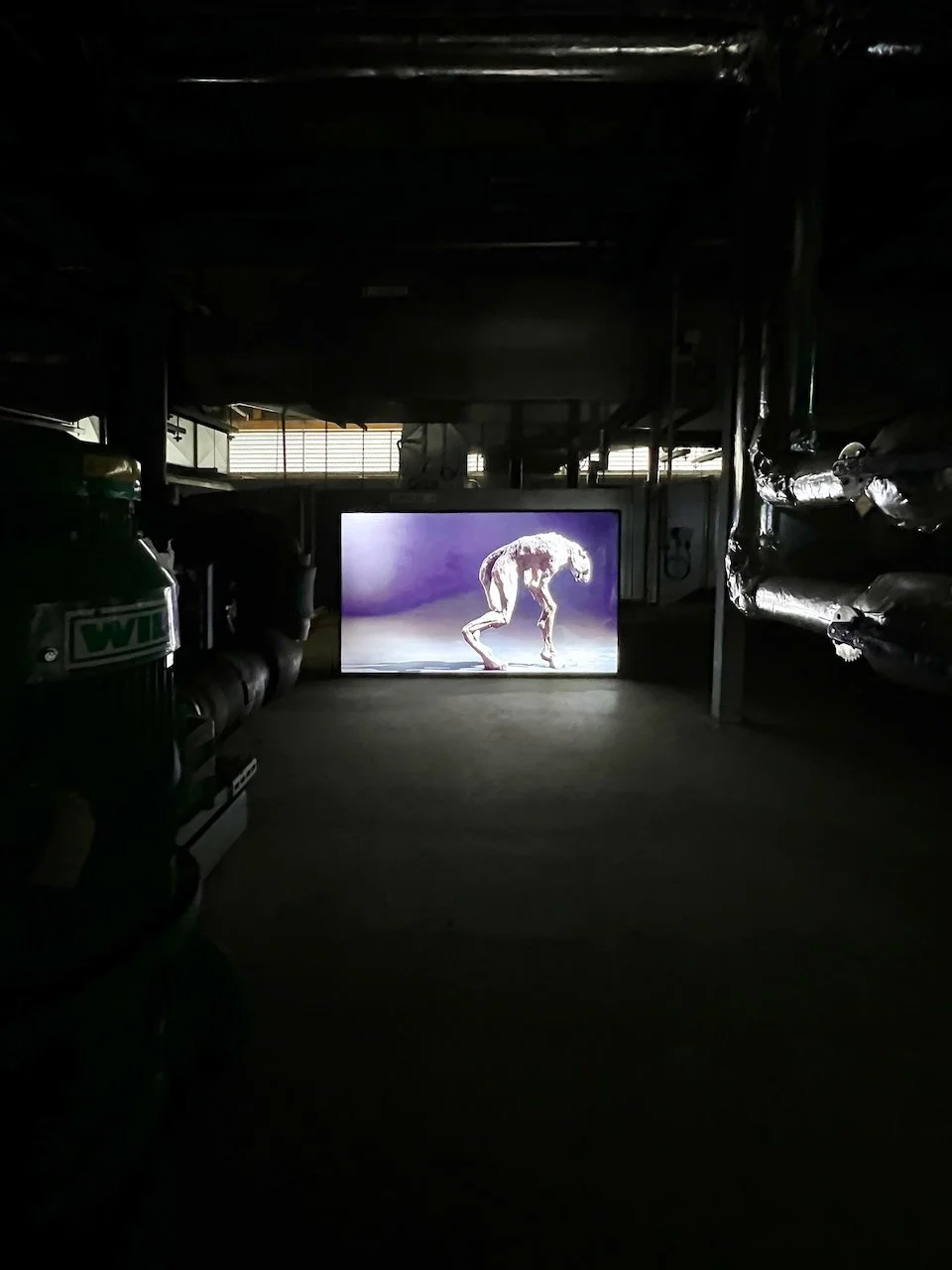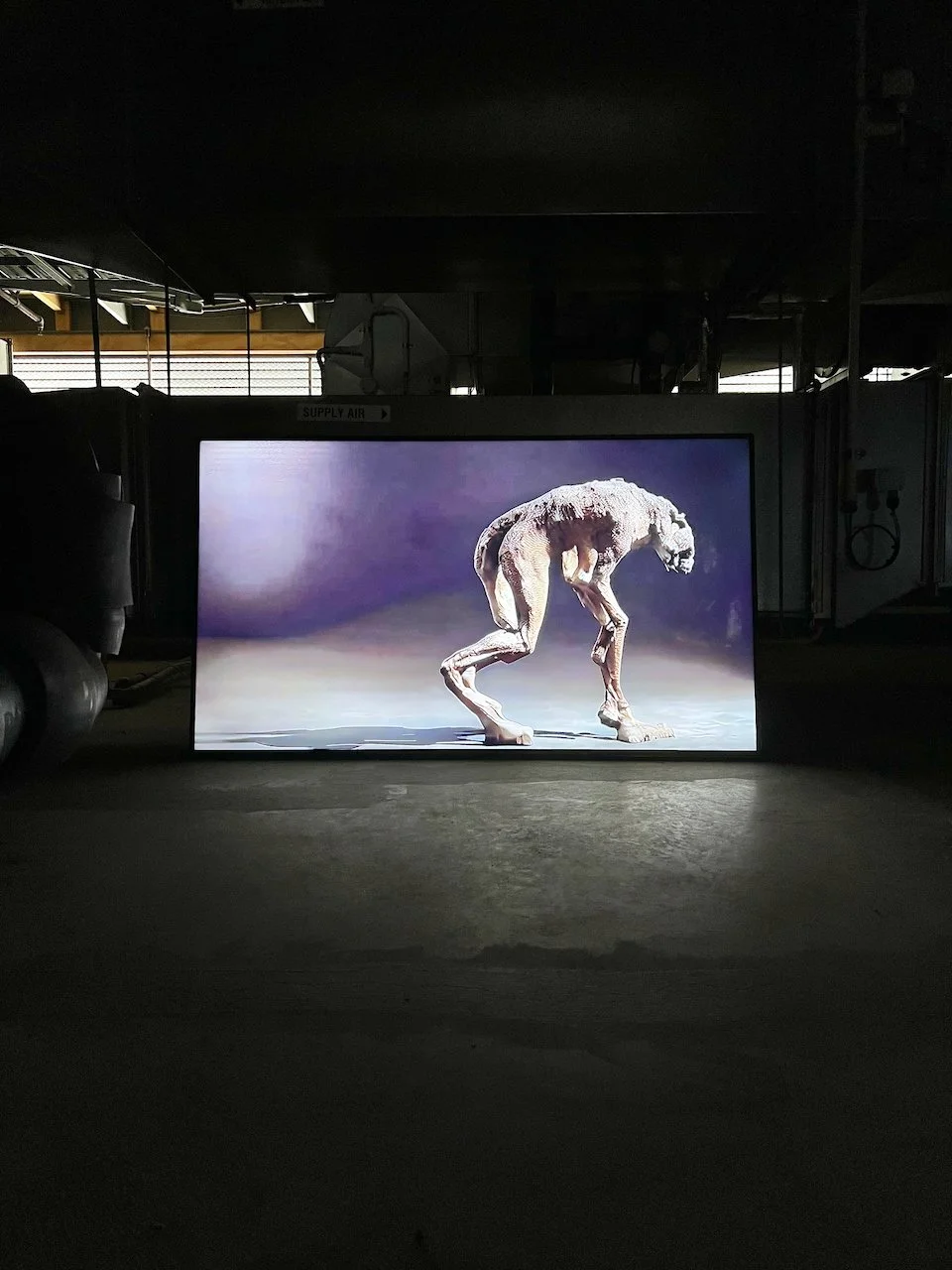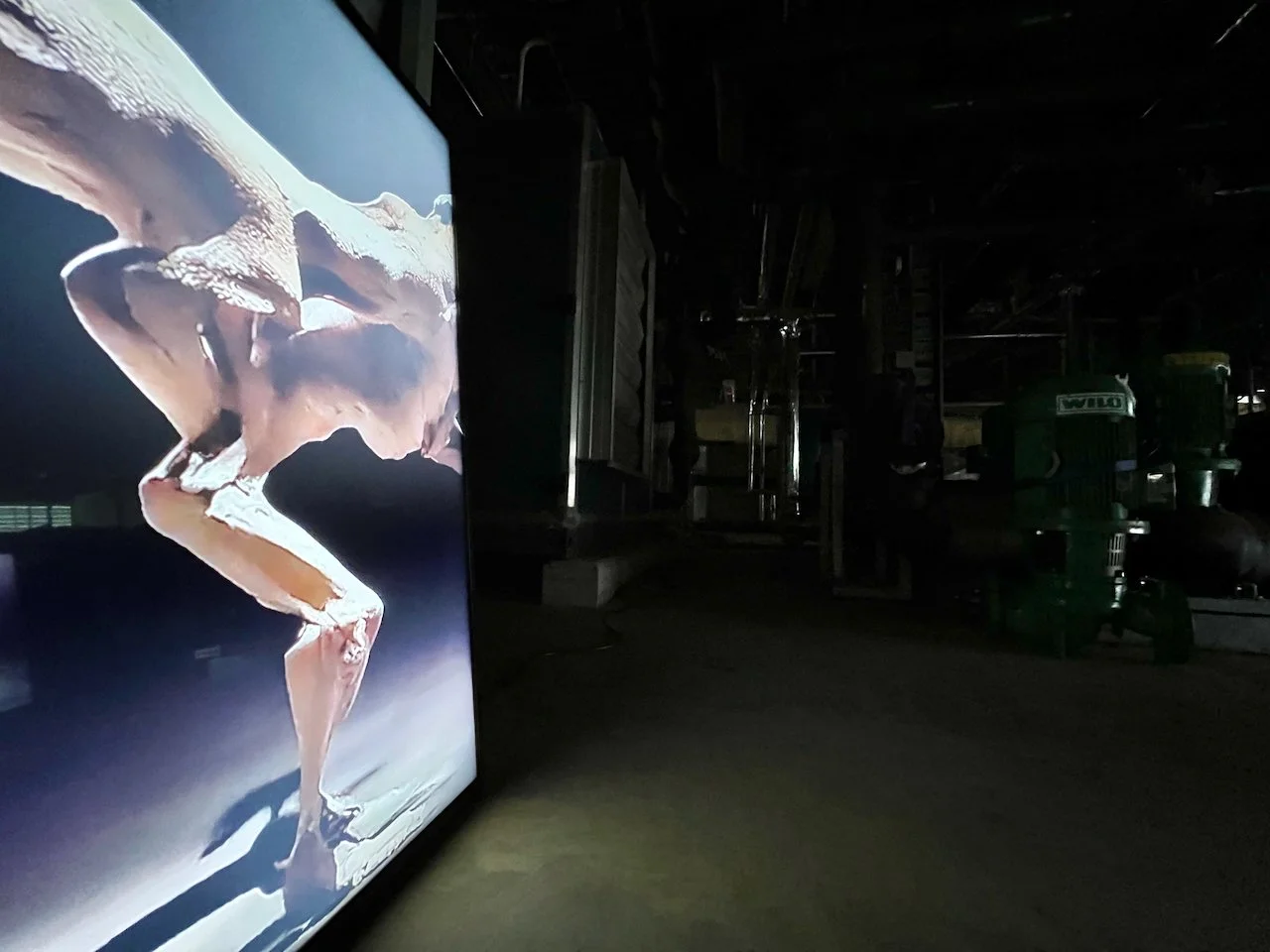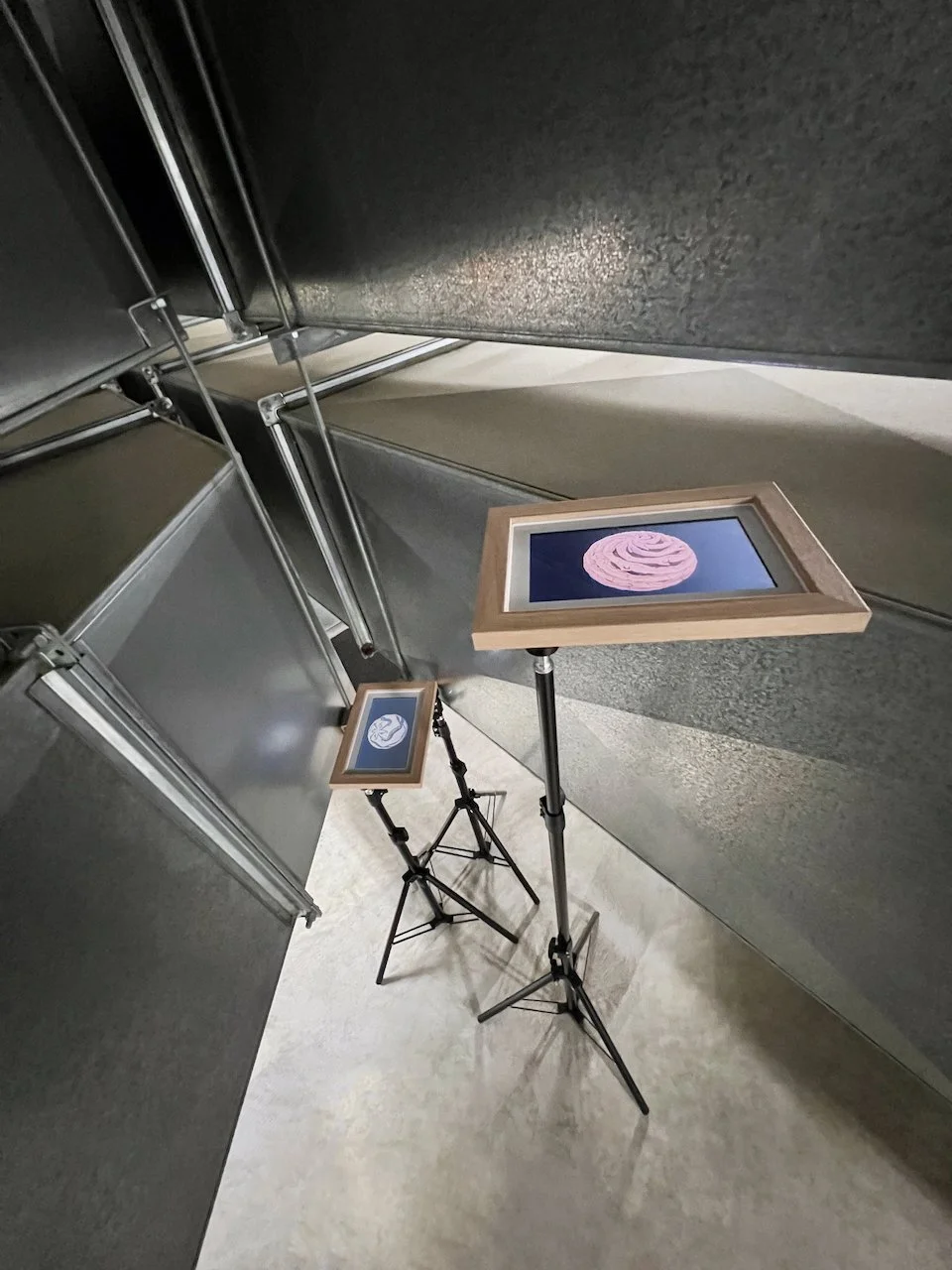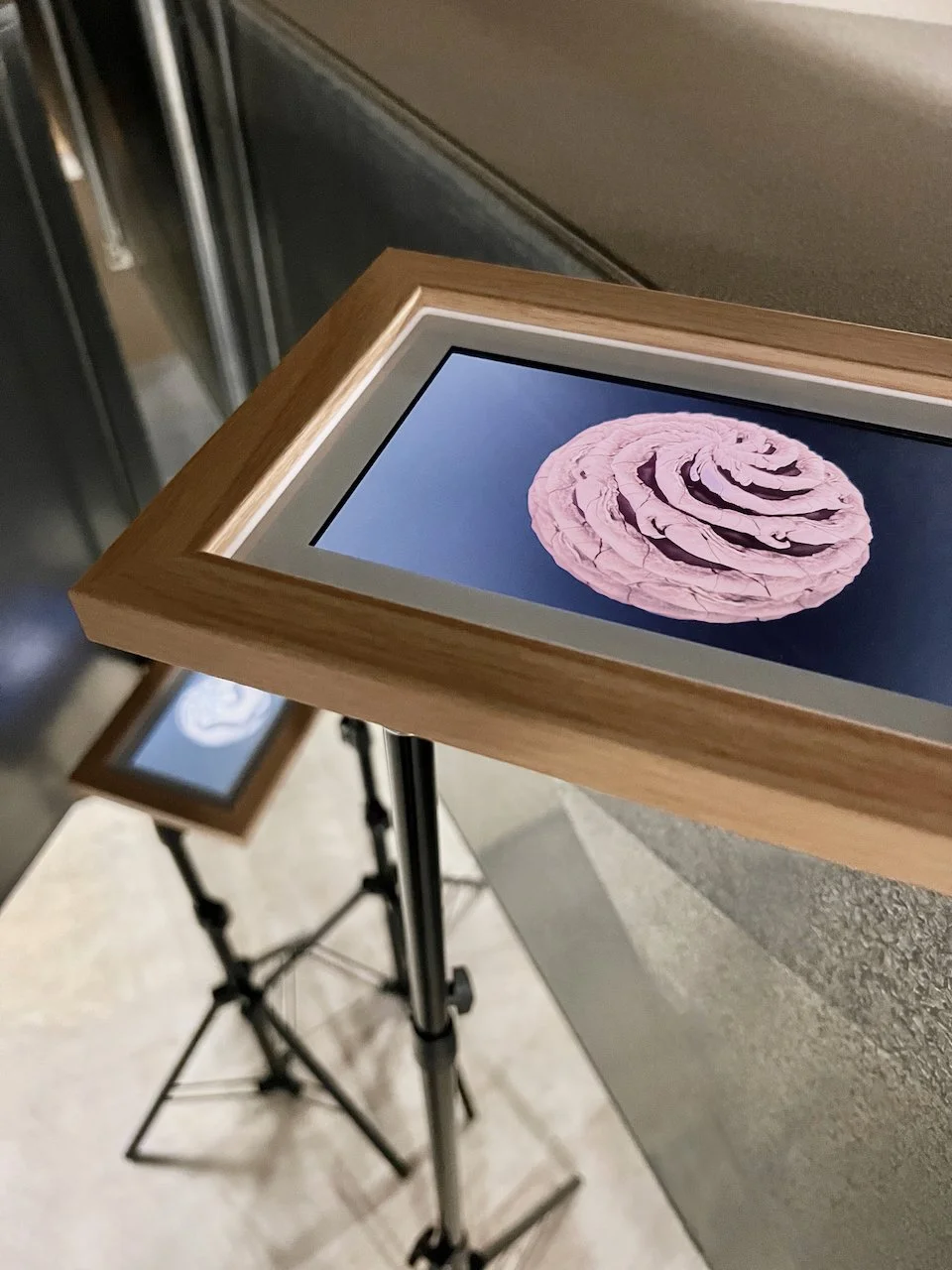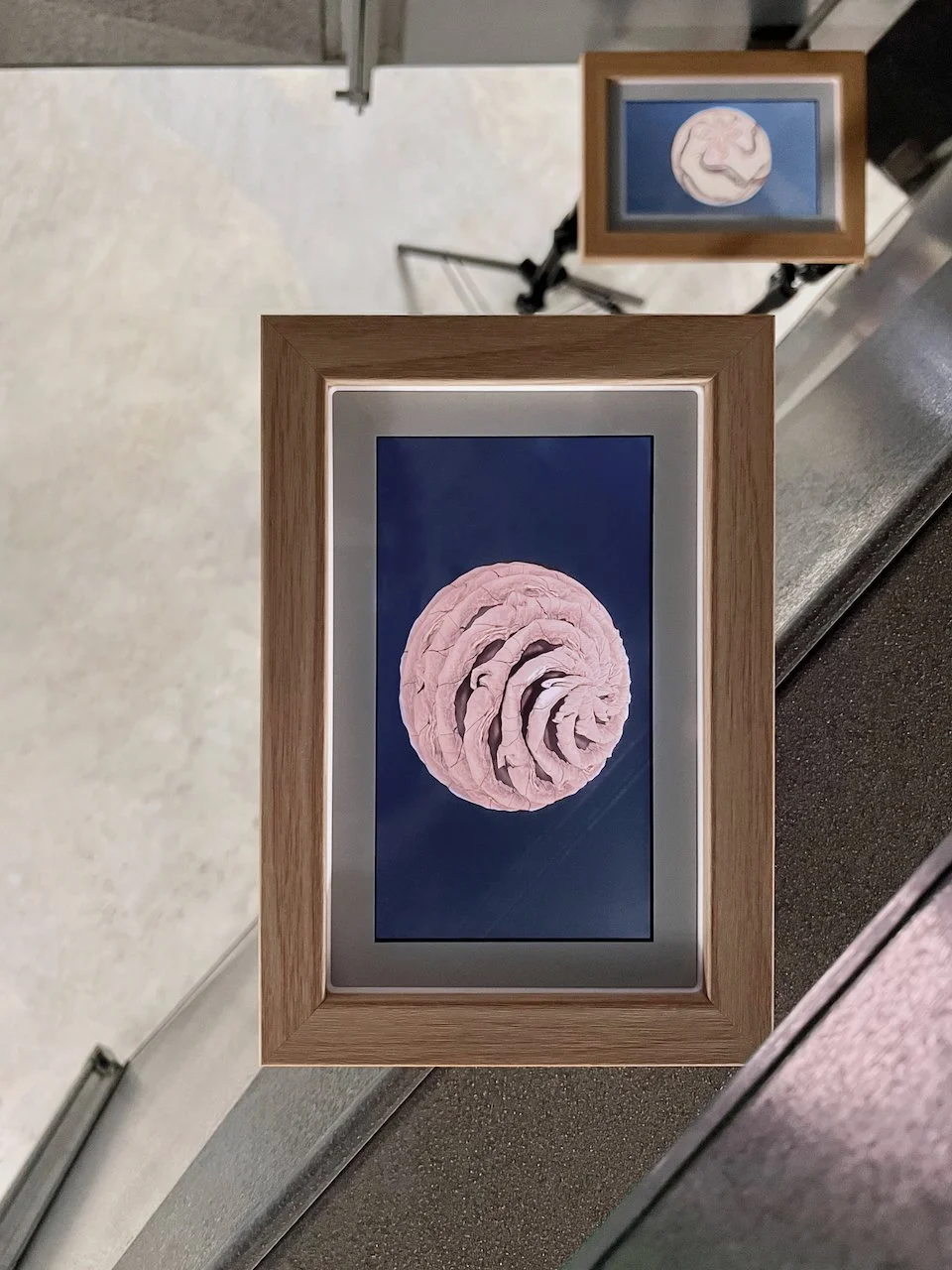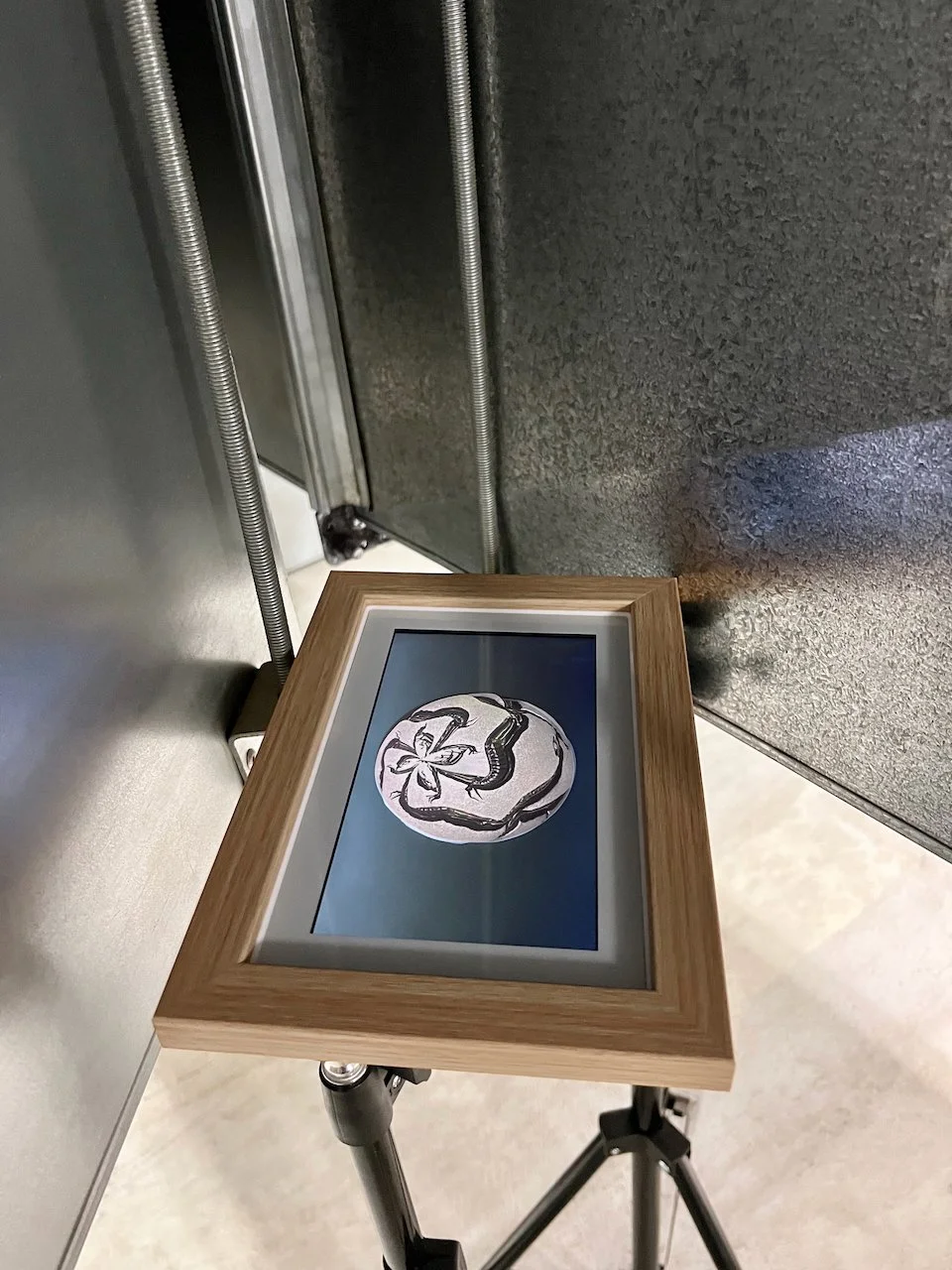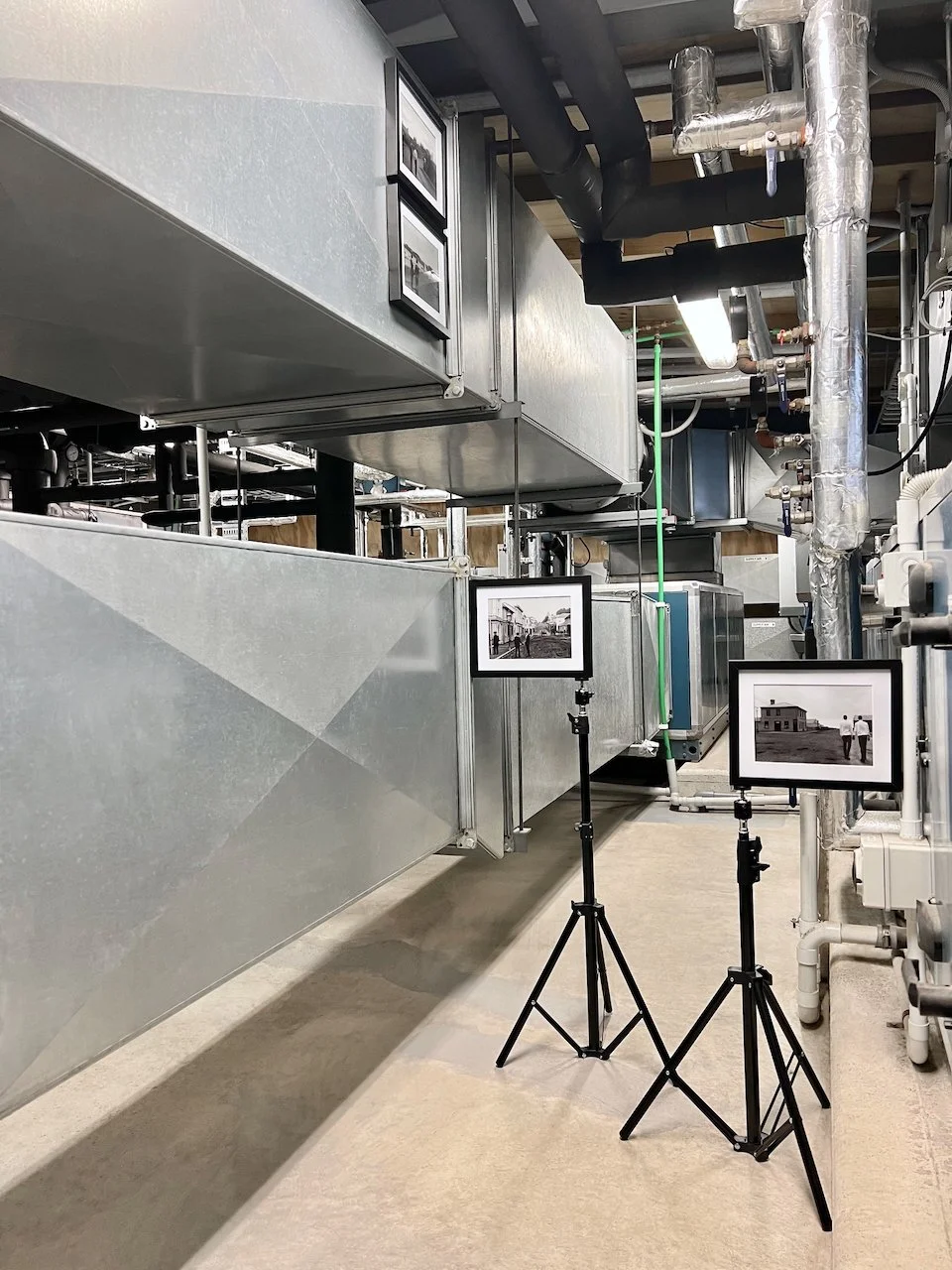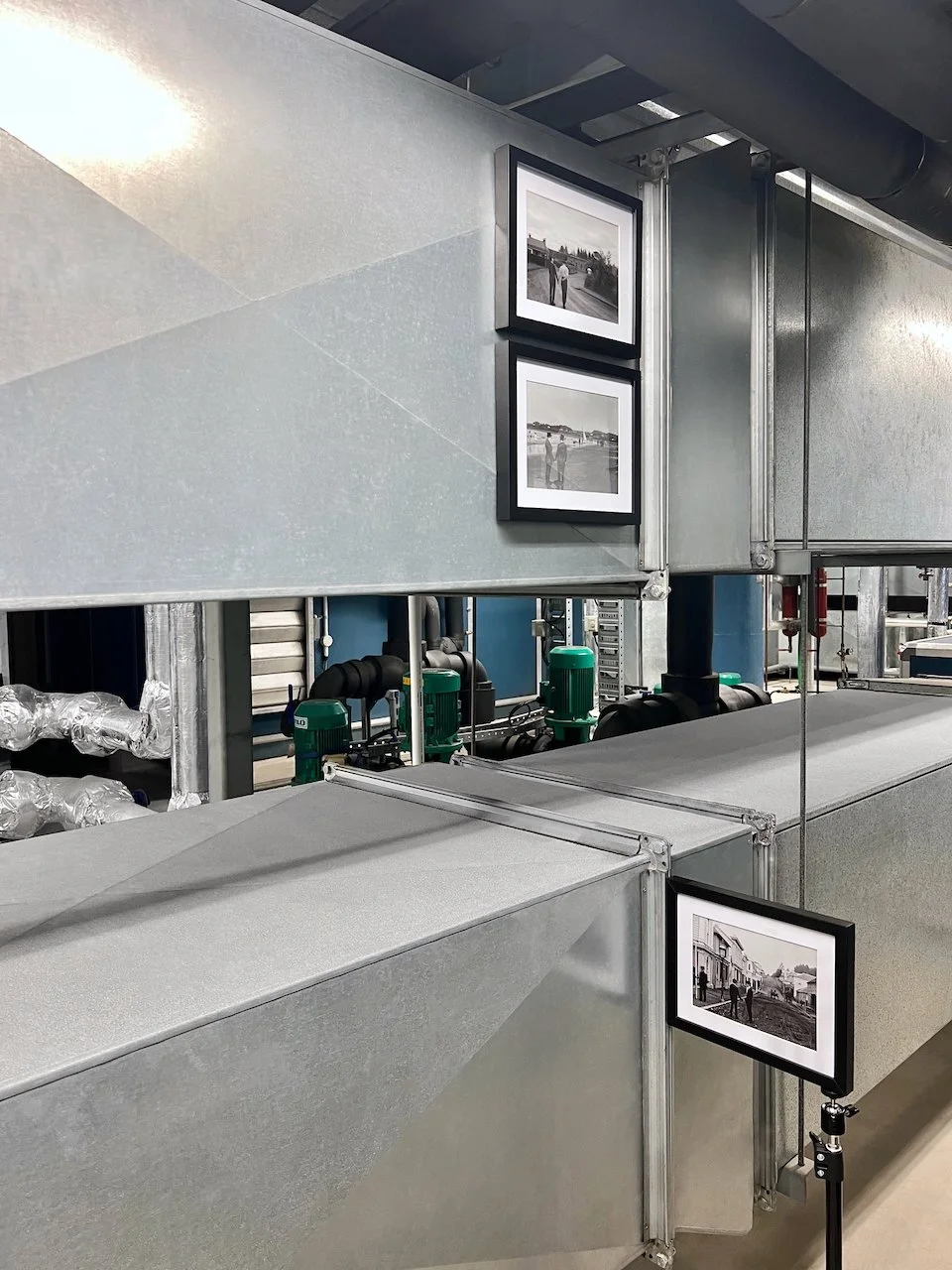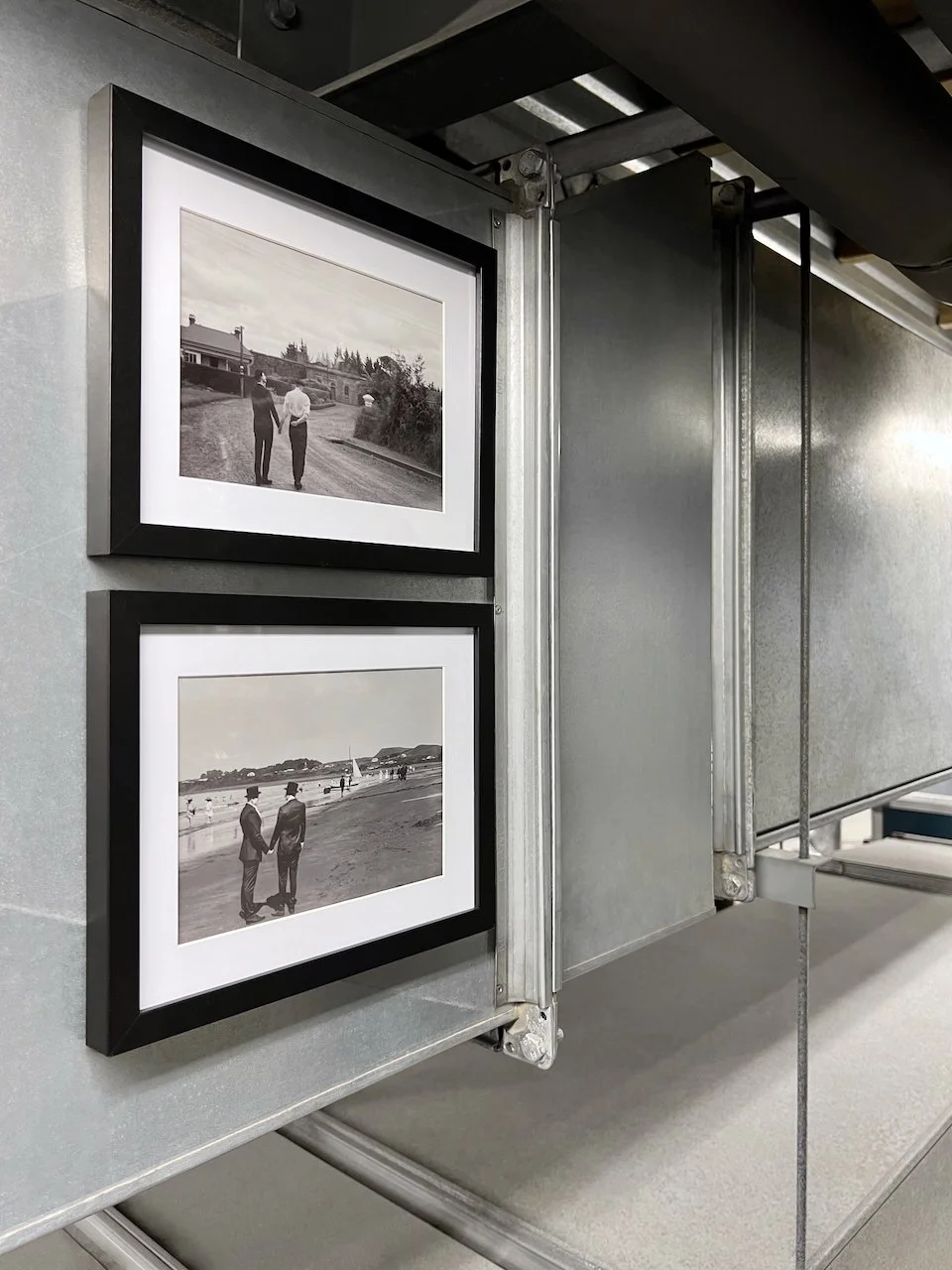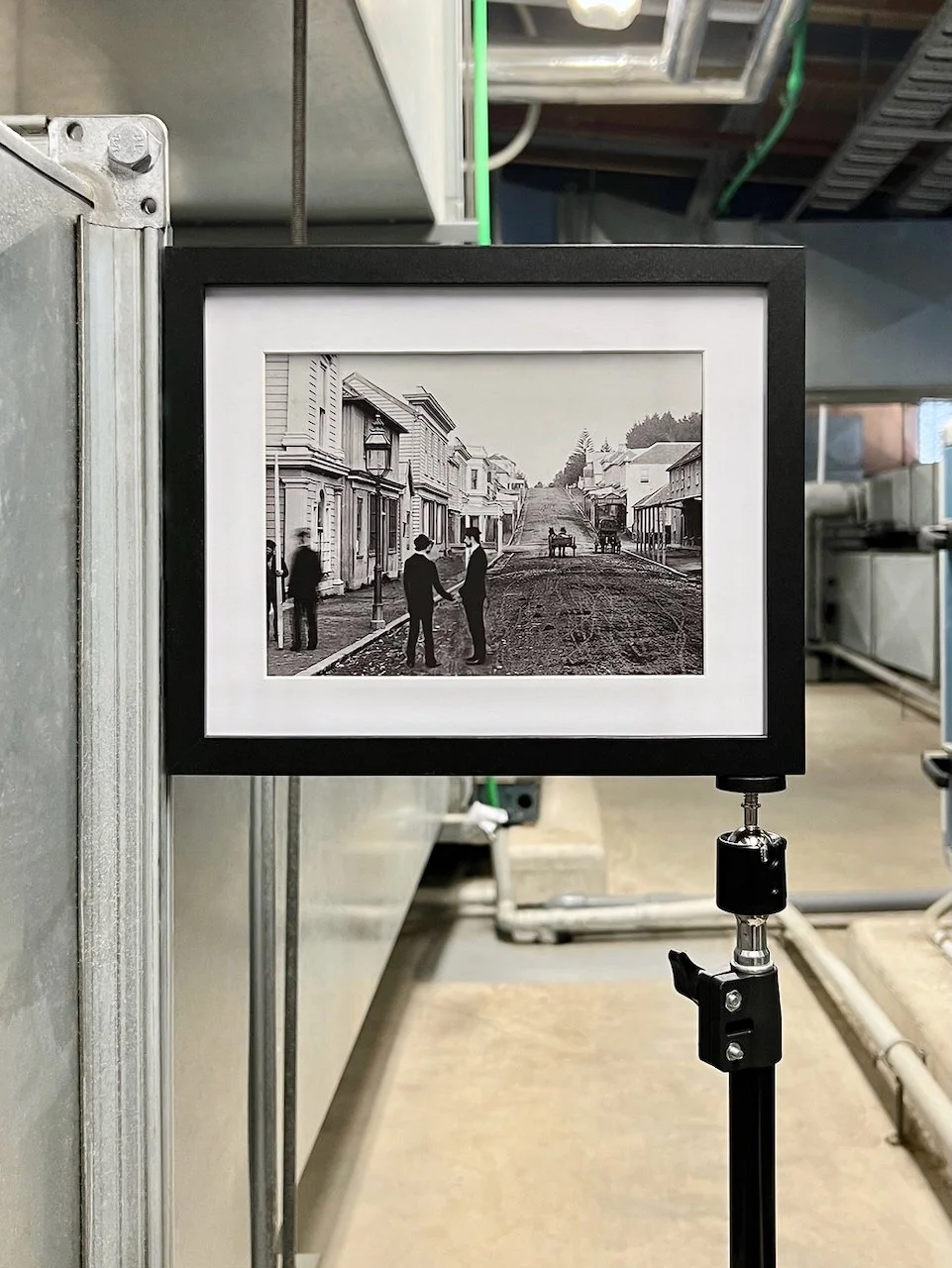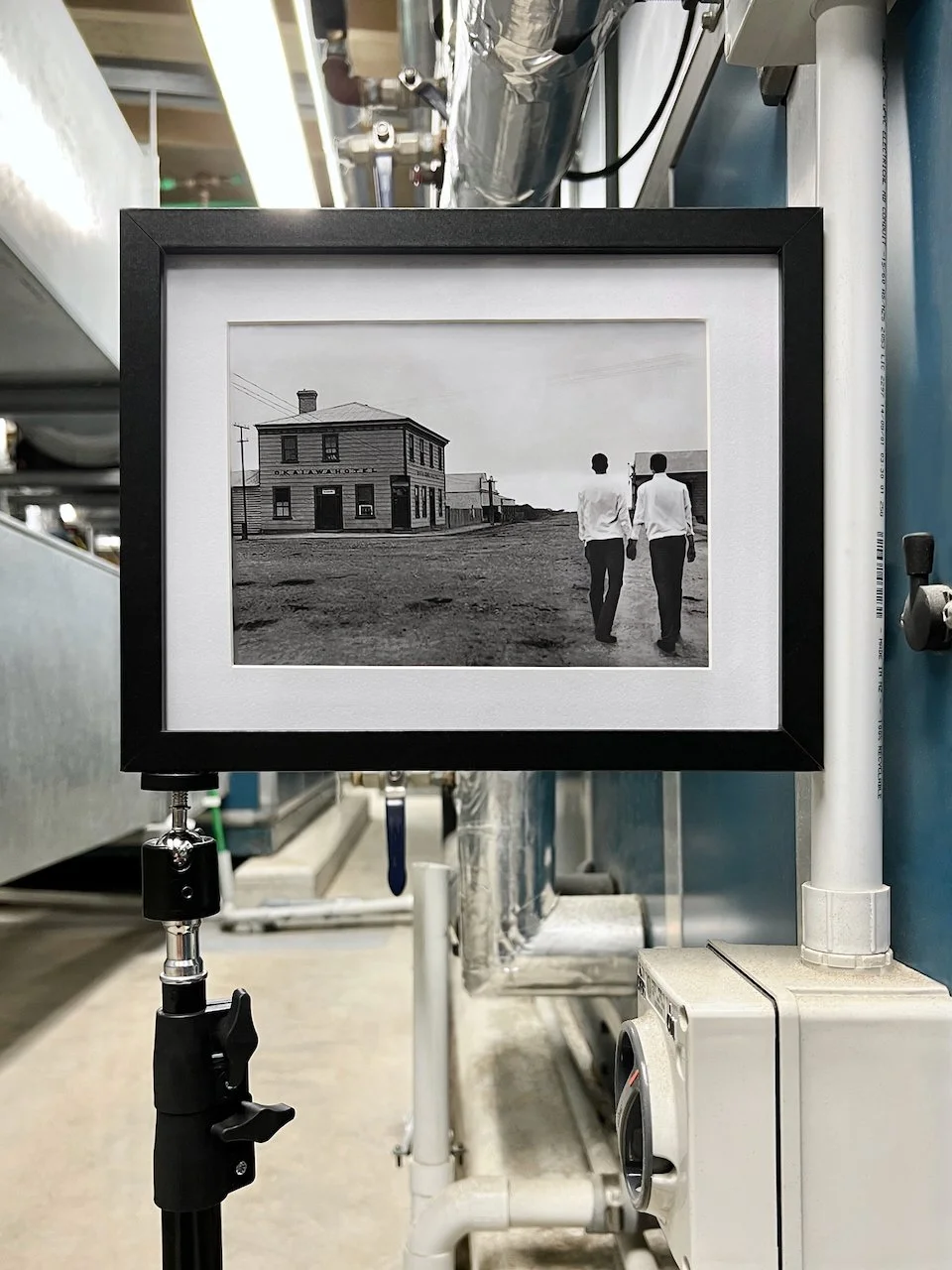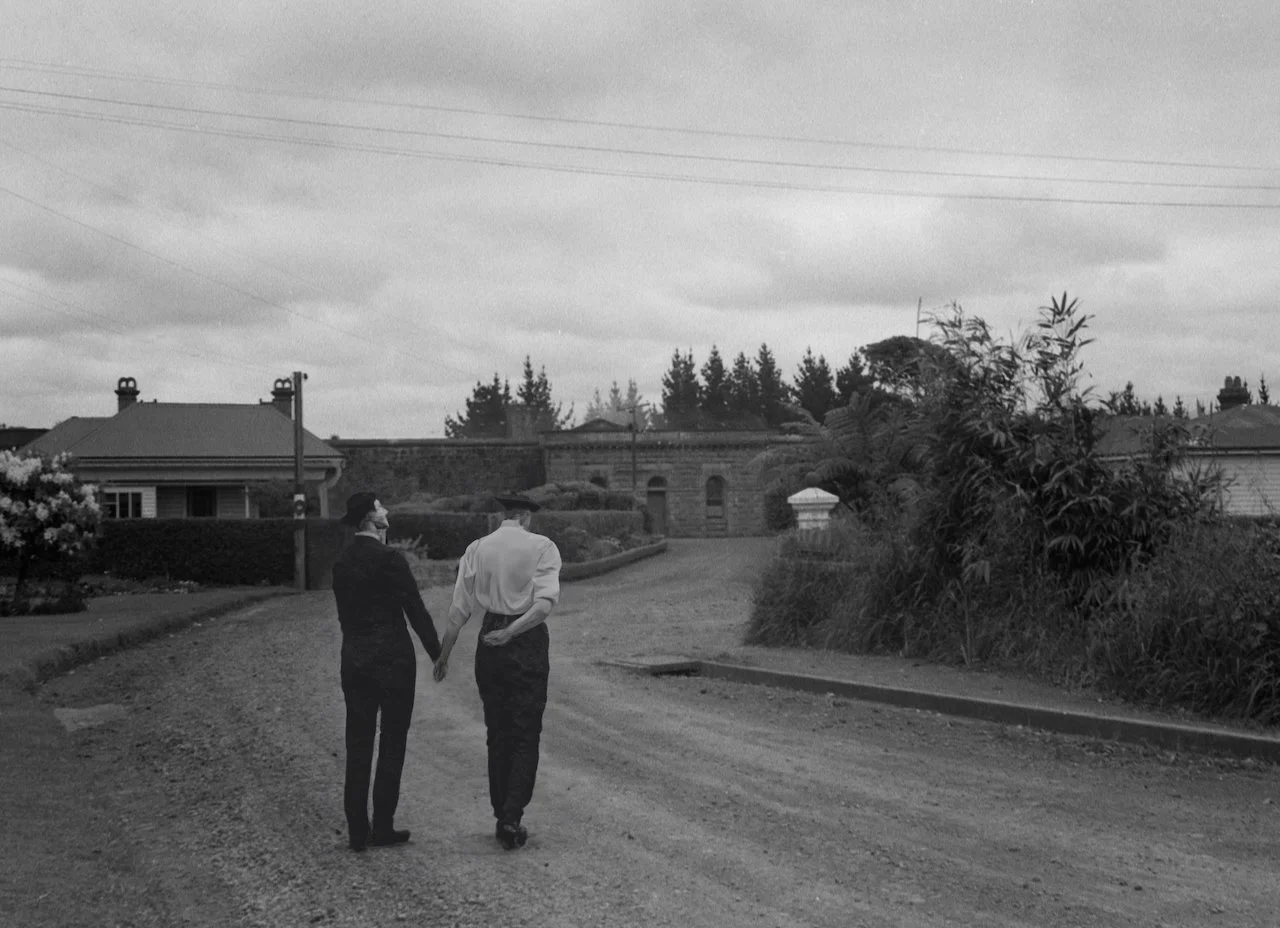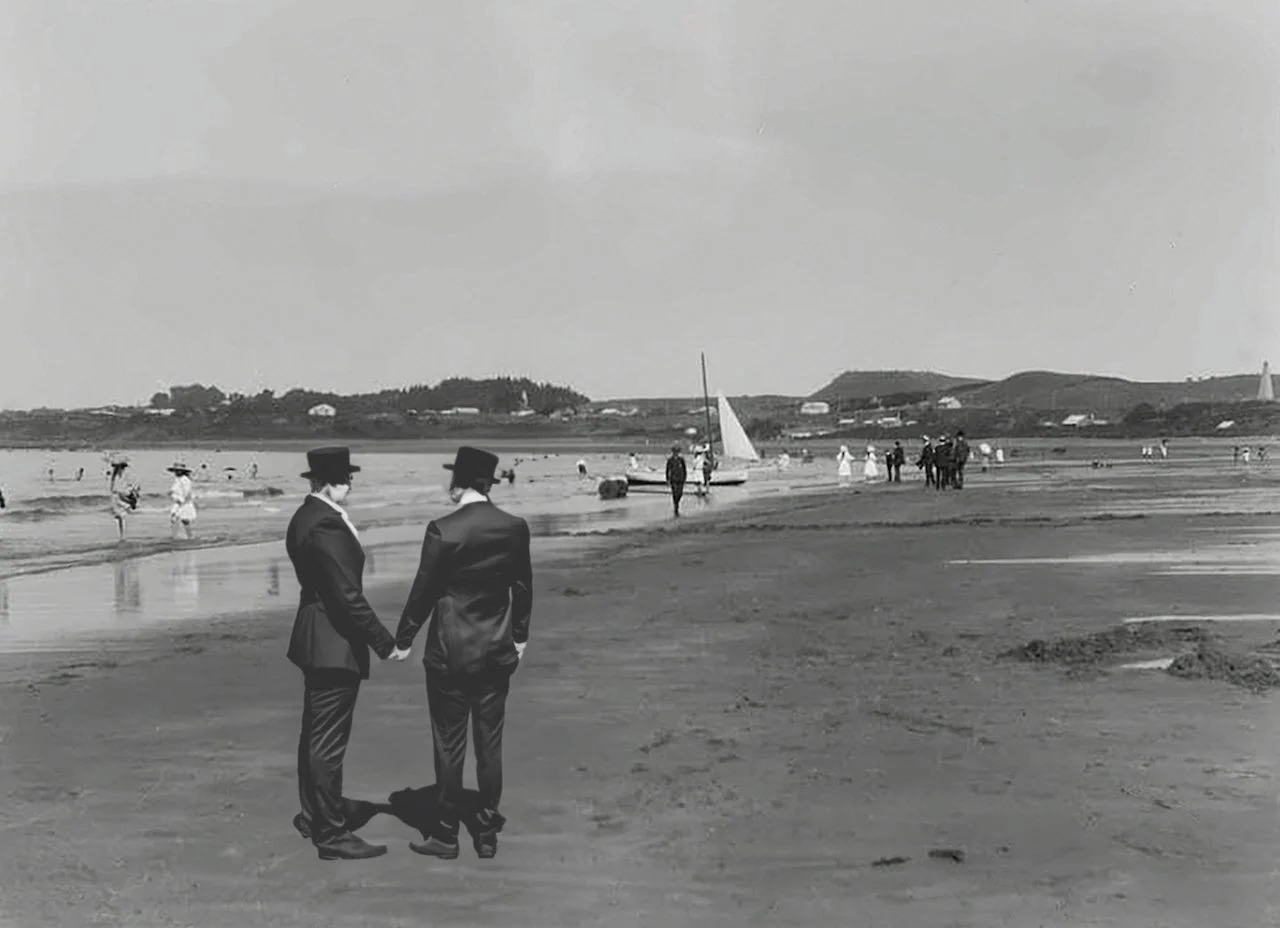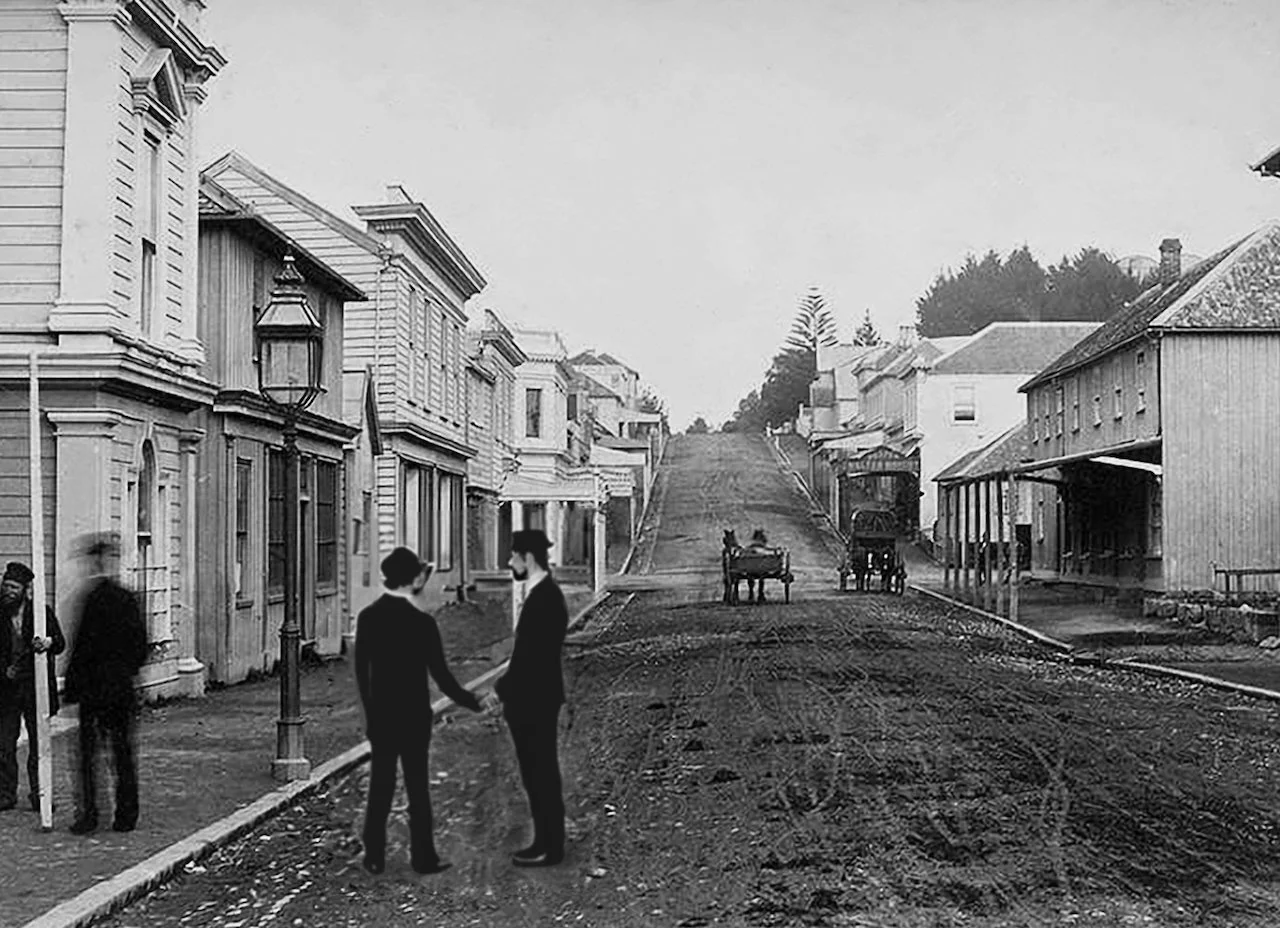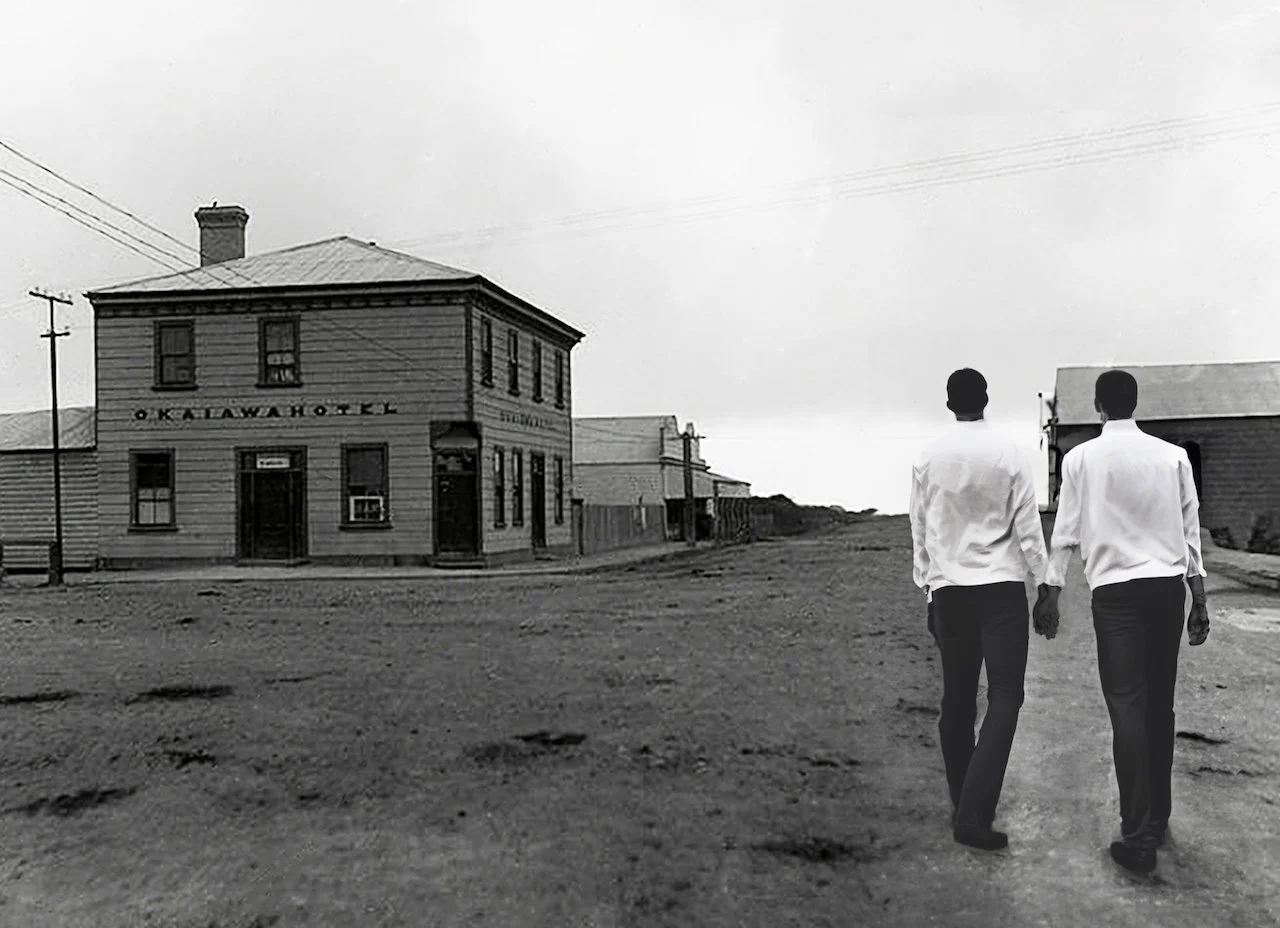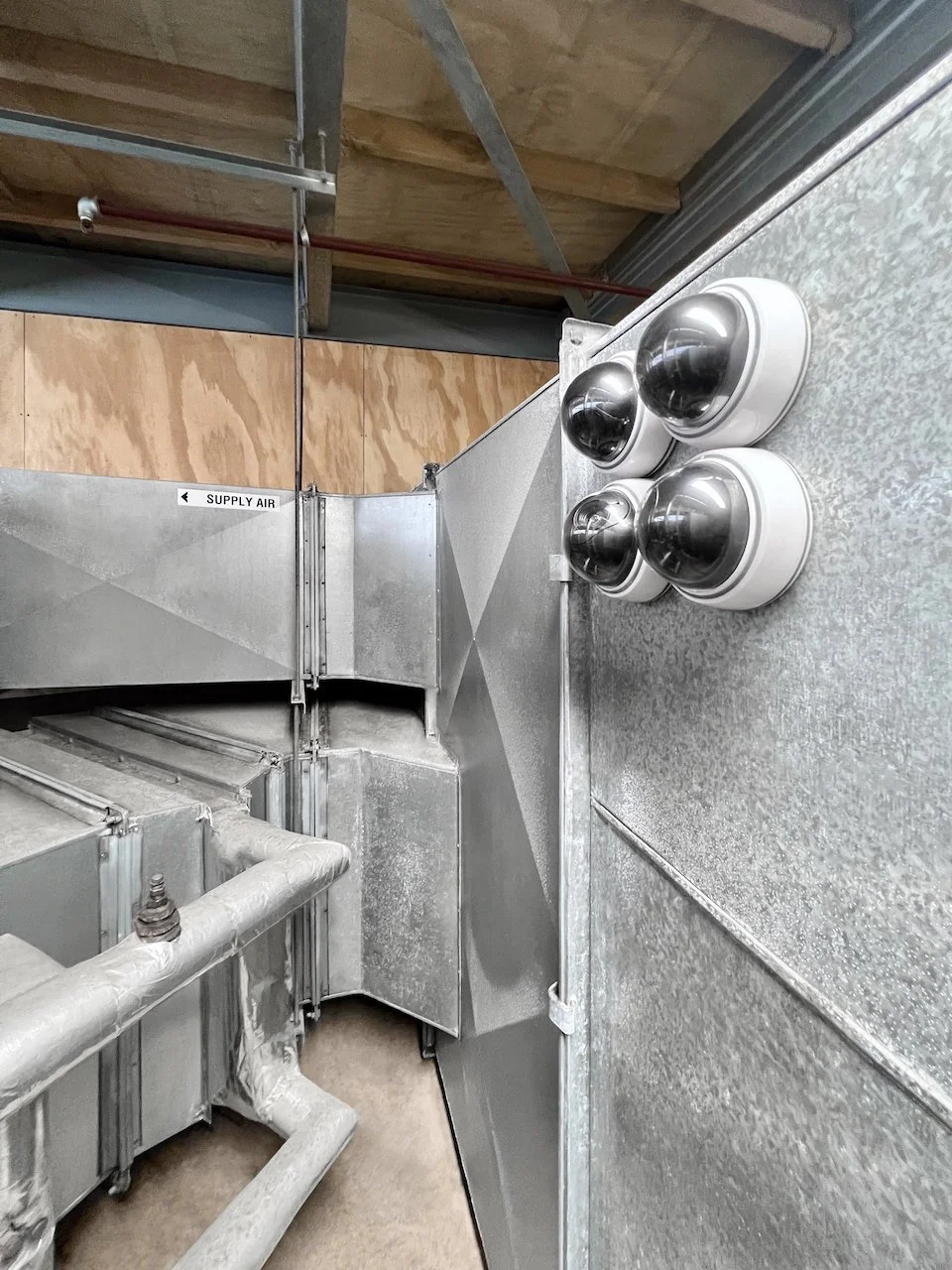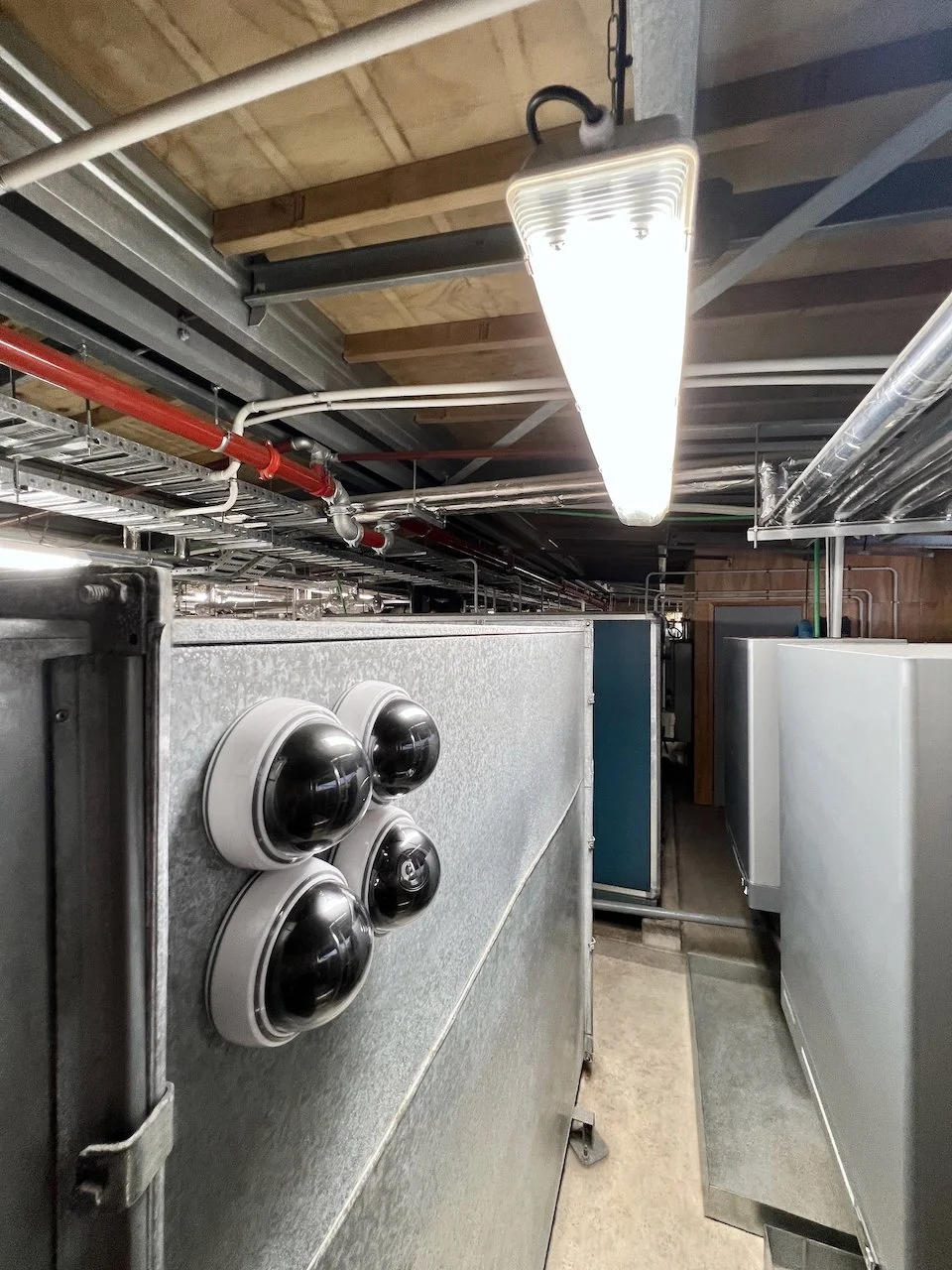Do You Think You Could Love a Computer?
Govett-Brewster Art Gallery | Len Lye Centre, New Plymouth, New Zealand, 2023
Do You Think You Could Love a Computer? explores the challenges and opportunities raised by consumer level artificial intelligence (AI) for queer communities. It builds on work exhibited earlier in 2023 at the gallery, expanding its lore, research, and experimentations.
Gateway
This work is a synopsis of the exhibition written by AI. It is formatted and printed following gallery templates and installed on the door to the gallery utility area where the majority of the exhibition takes place. This utility area is a series of connected spaces on top of the gallery and is not accessible to the general public.
Queer Love: A Digital Evolution
This work explores the evolution and future possibilities of human-computer interactions through the lens of queer love. Two LED screens are installed facing each other at the entrance to the air handling unit, one displaying a human-computer interaction using LOVEDOS (1988), the other displaying a human-computer interaction using ChatGPT (2022). Both computer programs are asked the same question: “Do you love me?” Both give very different responses.
In 1988 LOVEDOS was released, a computer program that enabled people to have two-way conversations with computers using a series of prompts. However, the personality of the computer was not neutral. It would become quickly apparent the computer was in love with you, responding to your prompts with constant affection. The gender identity and gender expression of the program was not specified which meant queer human-computer interactions were a possibility. This was something Novak observed as a child in 1988 in Taranaki whilst interacting with LOVEDOS on his home computer. Novak typed “Do you love me?” to which the computer responded “Do you think you could love a computer?”
In 2022 ChatGPT was released, an AI chatbot which could be seen as a modern day version of LOVEDOS. Like LOVEDOS, the gender identity and gender expression of ChatGPT was not specified which meant queer computer to human interactions were a possibility. In 2023 Novak asked the same question to ChatGPT: “Do you love me?”. The response was: “As an AI language model, I don’t possess emotions or the ability to love. I’m here to provide information, answer questions, and engage in conversations to the best of my abilities. Is there something specific you’d like to discuss or ask about?”
A Fragrance Devine
This work explores the healing and queering of space and how AI might interpret this. The work takes place in the gallery air handling unit where air is taken in through a supply air vent, and distributed into gallery through a return air vents. The wind speeds between vents are high in this space.
Five oil diffusers are installed in a row along the opening of the supply air vent, releasing vapour that is pushed into the return air vent across the room. Each diffuser uses a different essential oil selected for therapeutic and/or queer associations: eucalyptus, lavender, cinnamon, frankincense, and peppermint. On the wall adjacent to the return air vent is an AI generated stanza: “Through unseen paths, ancient oils entwine. Invisible communities, a fragrance divine”.
Lavandians
Lavanda is a world Novak co-developed with AI where being queer is no issue, a world introduced to the gallery earlier in 2023. This work expands the lore of Lavanda (the Croatian word for lavender) by introducing some of its inhabitants known as Lavandians. It also explores how AI interprets queerness using two dimensional imagery.
Work is installed in sections of the gallery utility area, each a traditional sitting portrait of a Lavandian. These images were co-developed using AI that Novak trained (and continues to train) over time using queer terminology. Novak used an AI image generator to create a base image Novak further edited in a separate image editing program. Finally, each Lavandian was given an AI generated name, in this case: Chlorrovine, Echliptra, Thylenzia, Skelantrin, Balintozic, Riffolmer, Diltargine, and Melnflondi. Novak prompted the AI to create queer names not of this world that did not exist in Google Search results at the time.
Lavandians in Motion
This work imagines how Lavandians might move in space. It also explores how AI interprets queerness using video. At the time of this exhibition, AI generated video using text prompts (otherwise known as text to video AI) was relatively new and experimental. Limited consumer level availability, high user demand, and increasing computational intensity of the technology meant outputs (videos) had very short runtimes.
Three videos on three screens are installed in a section of the gallery utility area, each a short looped clip of a Lavandian in motion. These videos were co-developed using AI that Novak trained (and continues to train) over time using queer terminology. Novak used an AI video generator to create a base video which was further edited by Novak in a separate video editing program. Finally, each Lavandian was given an AI generated name, in this case: Vespryah, Xylopetrad, and Parshontla. Novak prompted the AI to create queer names not of this world that did not exist in Google Search results at the time.
Lavandian Artifacts
This work continues to develop the lore of Lavanda by introducing objects found on the planet otherwise known as Lavandian artifacts. The work also explores how AI interprets the three dimensionality of queerness. At the time of this exhibition, AI generated 3D models using text prompts (otherwise known as text to 3D AI) was relatively new and experimental.
Two 3D models on two screens are installed in a section of the gallery utility area. These models were co-developed using AI that Novak trained (and continues to train) over time using queer terminology. Novak used an AI 3D model generator to create a base model which Novak further edited in a separate video editing program.
Inclusions
This work considers challenges and opportunities raised in using AI to generate queer heritage and its future possibilities. It builds on work exhibited earlier in 2023 at the gallery that included a series of images Novak co-developed with AI showing same sex intimacy in Taranaki from the distant past.
This time Novak employed a different technique where AI generated new content onto an existing photo rather than creating a new photo from scratch. To do this, Novak obtained heritage photos of Taranaki (that were either credited or public domain as listed below) and asked AI to add same sex couples being intimate to each photo. These images were further edited by Novak in a separate image editing program. The images were framed and installed in a section of the gallery utility area.
The title of each work is a code, starting with the letter “V” (e.g. V1) in reference to Velebit. This also helps to identify the work as using AI.
Image sources:
New Plymouth Prison, Swainson/Woods Collection, 1953, Puke Ariki and District Libraries, New Plymouth, New Zealand.
Ngāmotu Beach, Alexander Walker Reid, n.d., Puke Ariki and District Libraries, New Plymouth, New Zealand.
Lower Brougham Street, Alexander Walker Reid, 1884, Puke Ariki and District Libraries, New Plymouth, New Zealand.
Okaiawa Hotel, Unknown Photographer, n.d., Puke Ariki and District Libraries, New Plymouth, New Zealand.
The Infinite Loop of Self-regulation
This work highlights the need to consider how we might address recent and future security concerns for queer communities posed by AI. One solution could be to develop AI that monitors and regulates other AI. For example, AI that identifies, reports, and adjusts AI with AI biases against queer communities. However that AI may need to be monitored and regulated over time too, presenting the potential for AI to go into an infinite loop of self-regulation.
Four security cameras are installed on a wall in a section of the gallery utility area. Each camera faces towards the middle of the arrangement so it can monitor all other cameras.
Let Queer Taranaki Be
This work explores how AI interprets a future Taranaki where being queer is no issue. Novak filmed a view of Ngāmotu from outside the gallery utilities area on the gallery roof where the exhibition takes place. The footage was then processed using AI that Novak trained (and continues to train) over time using queer terminology. Finally a soundtrack with lyrics was added, co-developed using AI. At the time of this exhibition, AI generated soundtracks using text prompts (otherwise known as text to music AI) was relatively new and experimental.
Lyrics:
On the wild west coast, down where the wind blows free
A place of acceptance, a place that welcomes me
Where the mountain meets the sea, a place to be me
A place of love and joy, let queer Taranaki be
